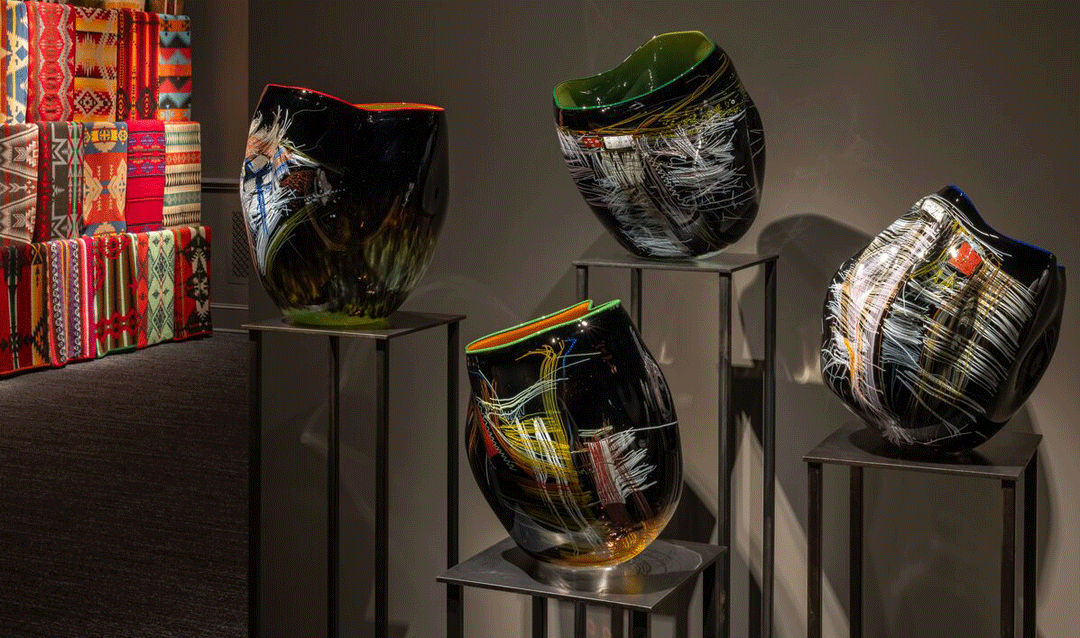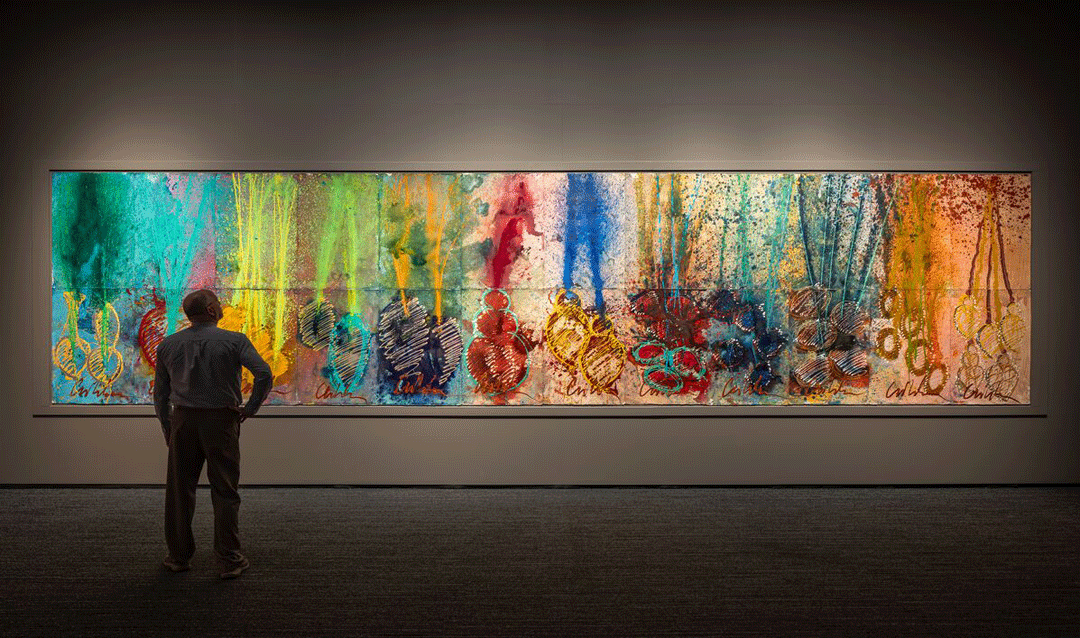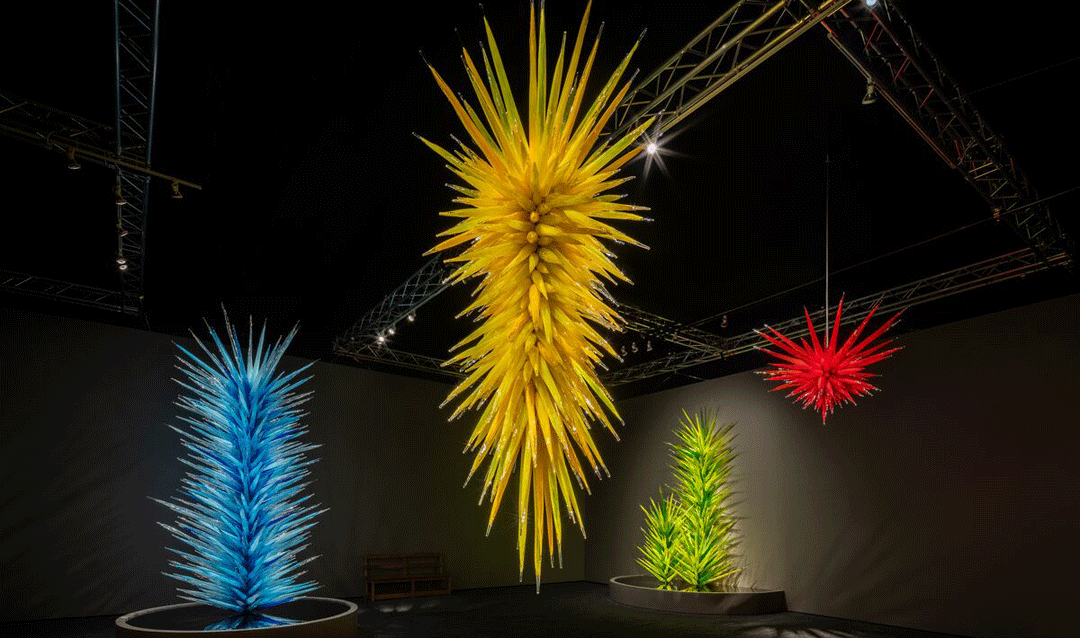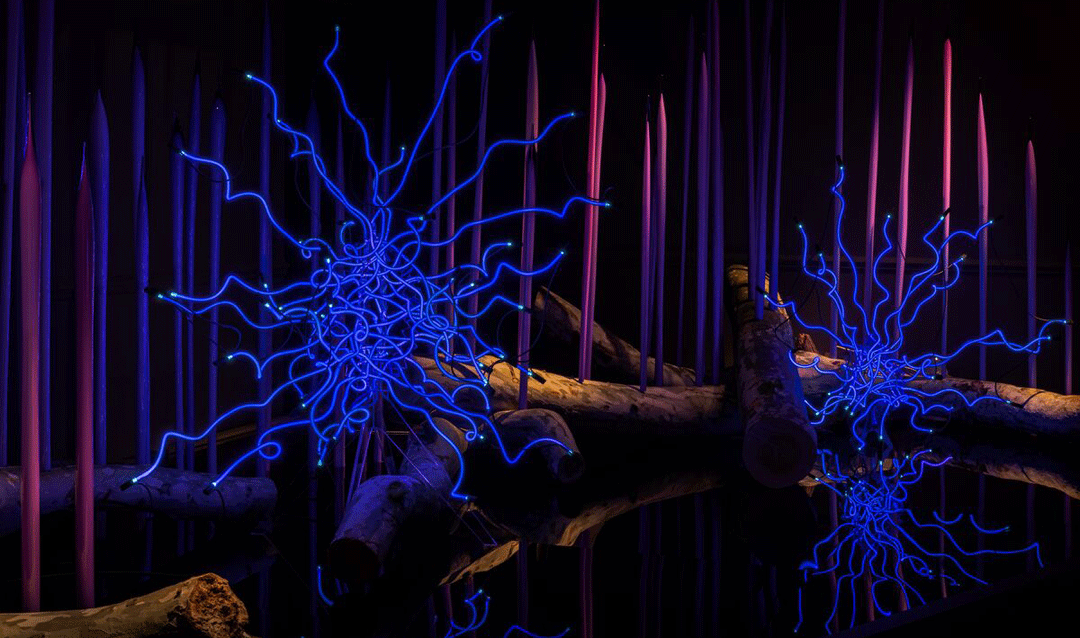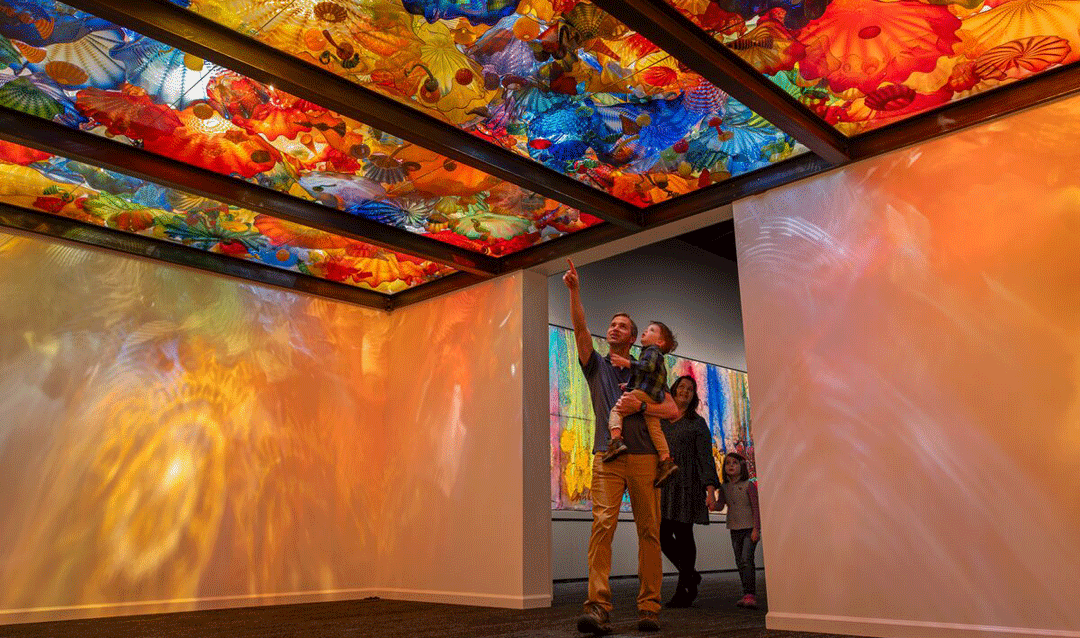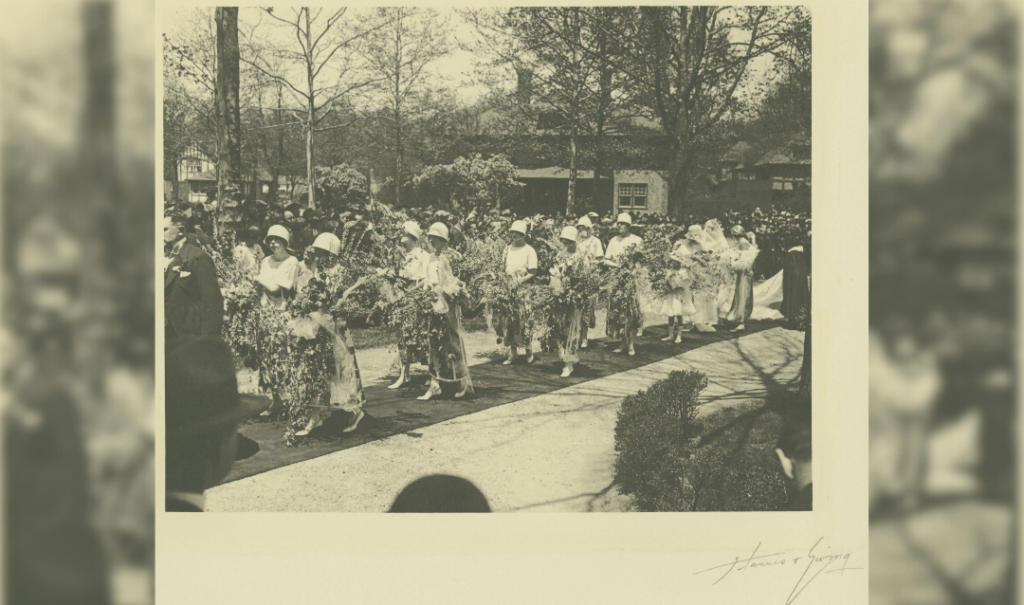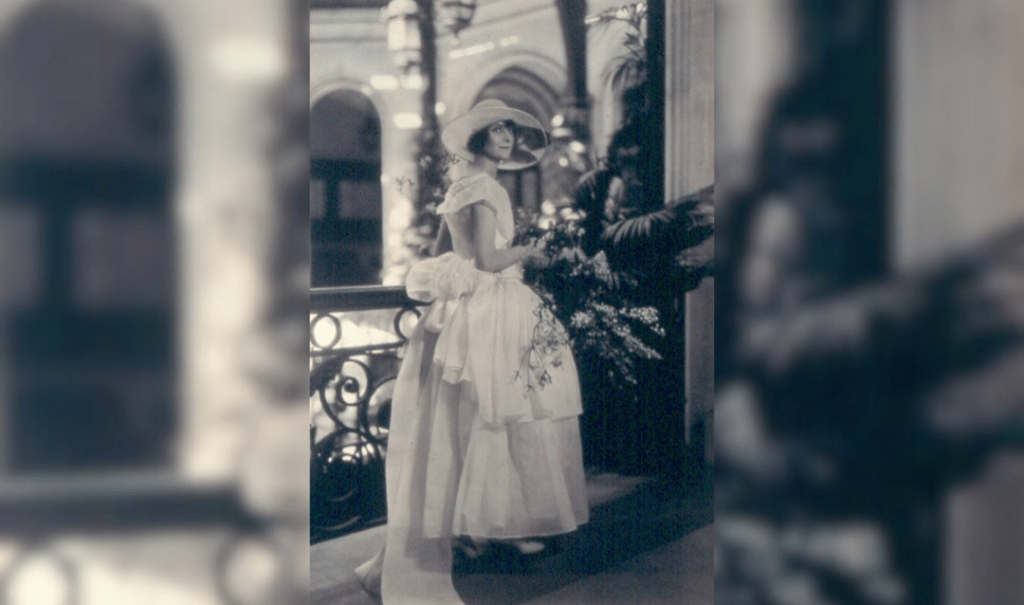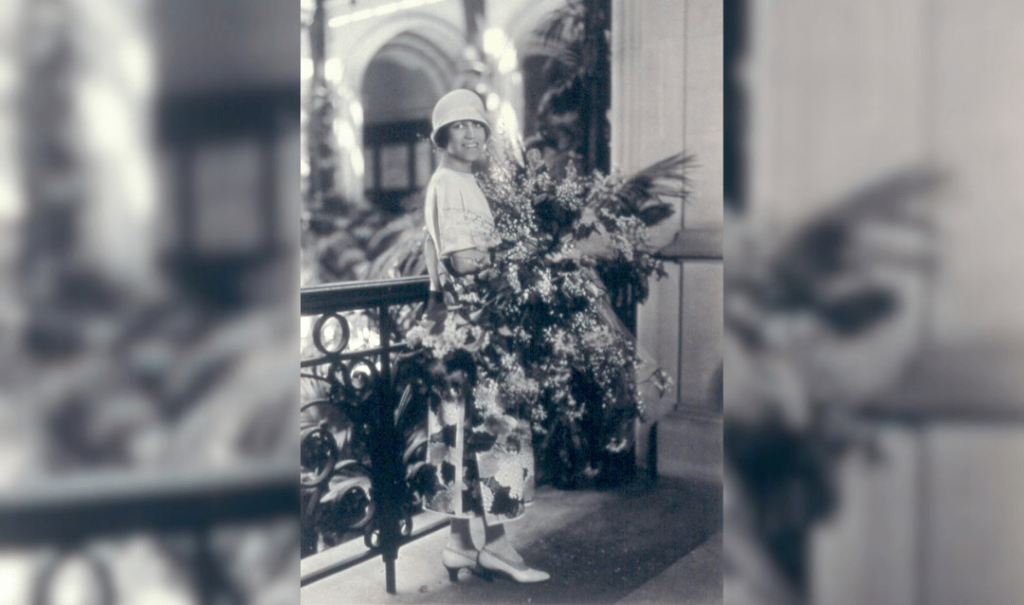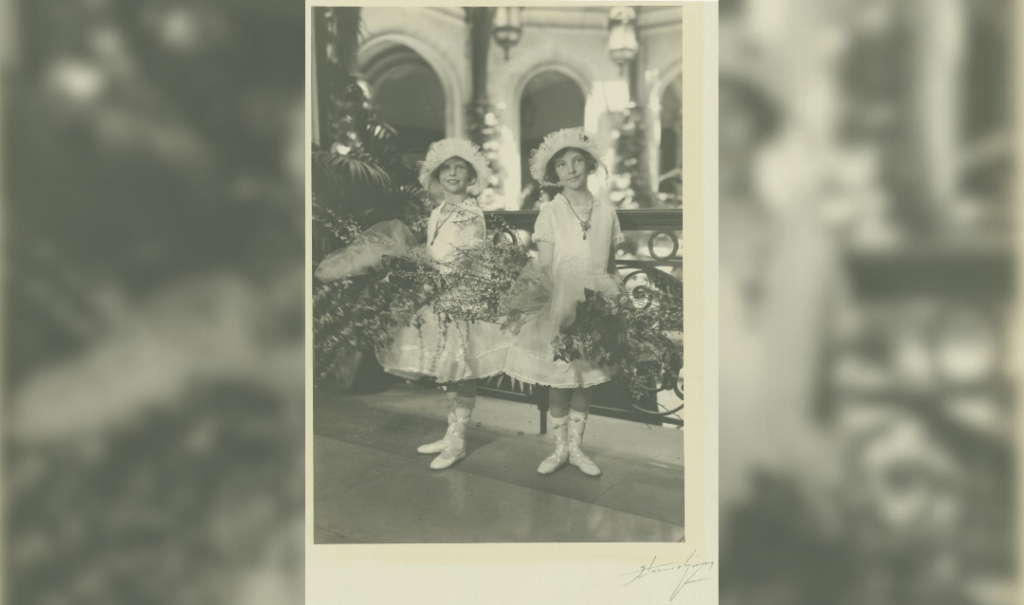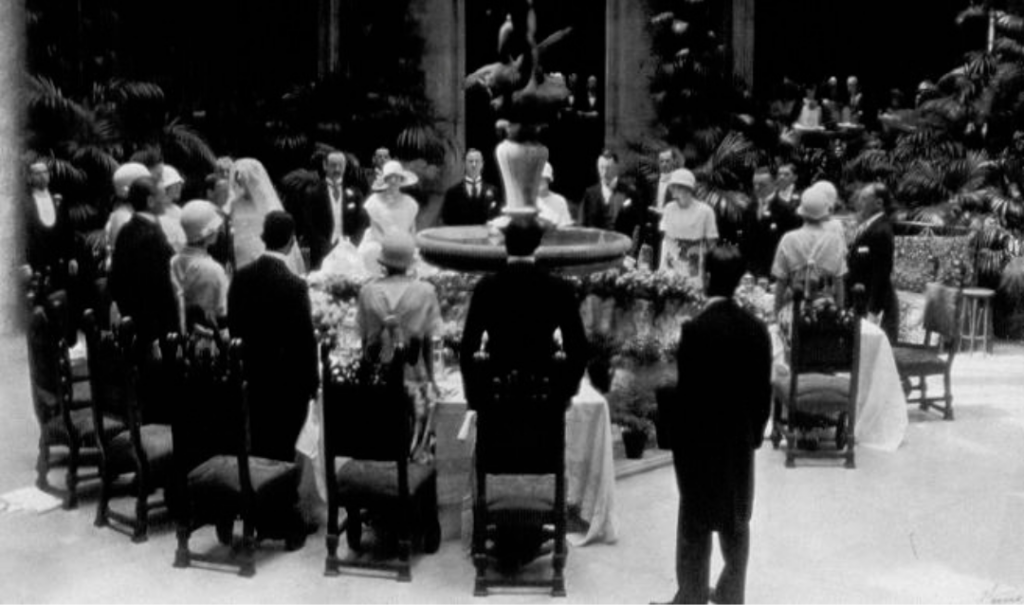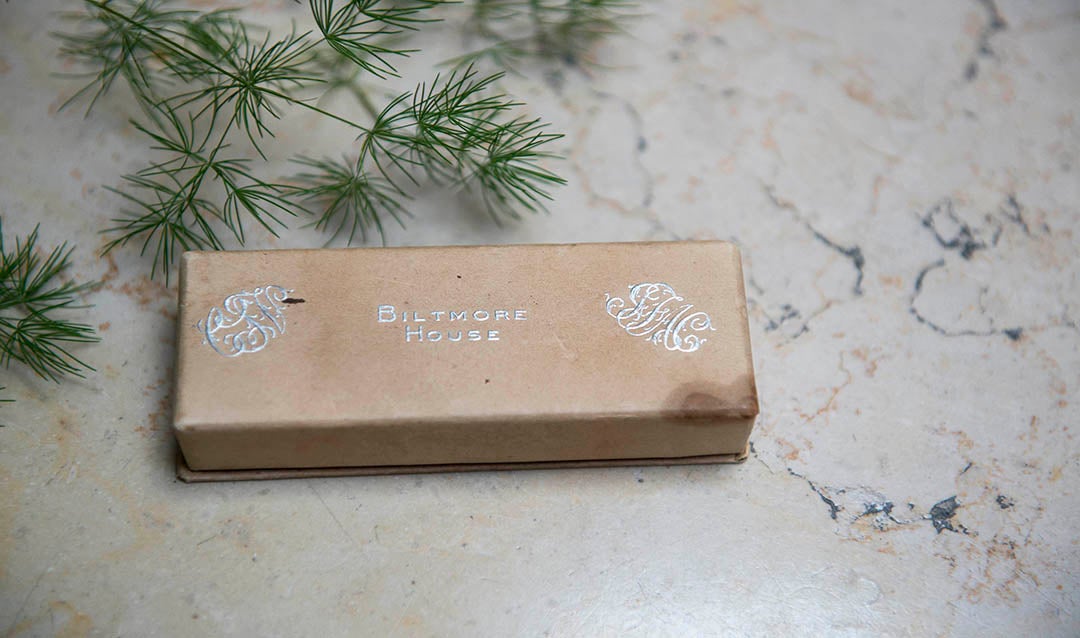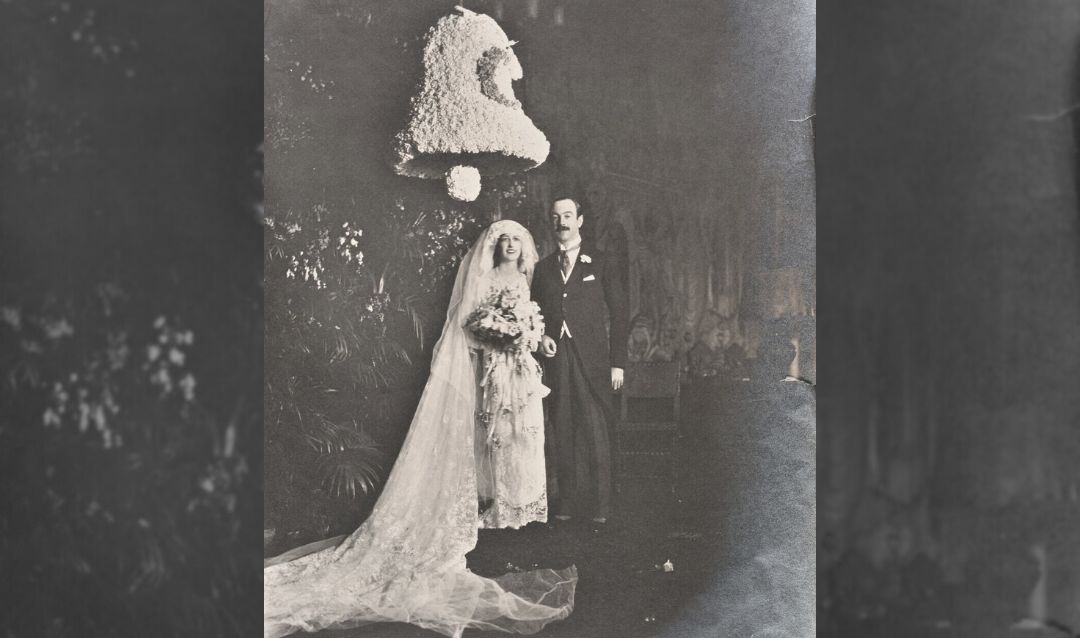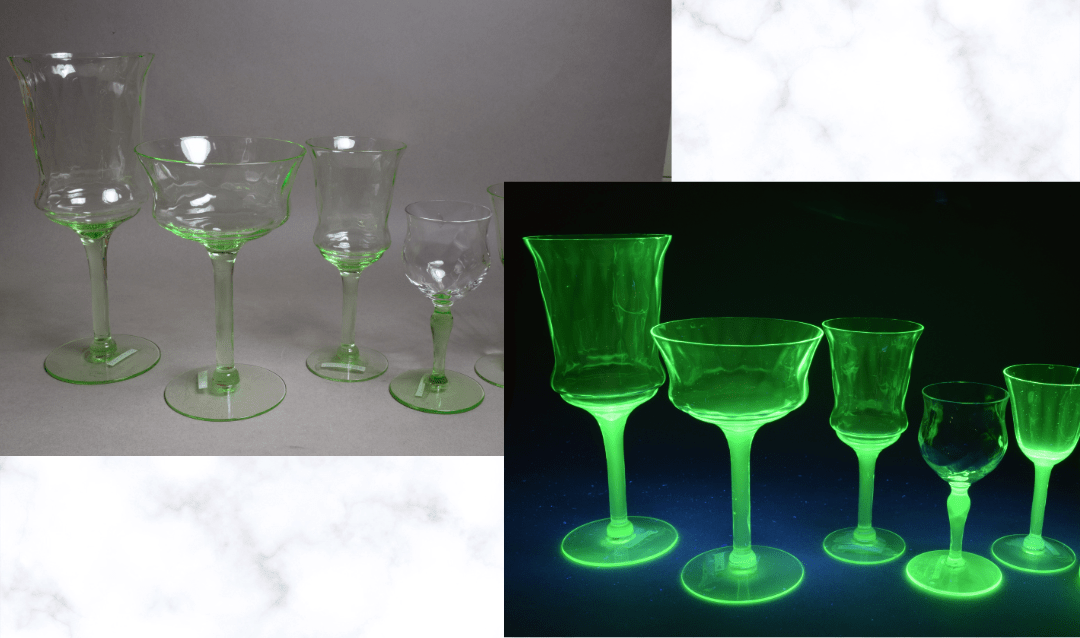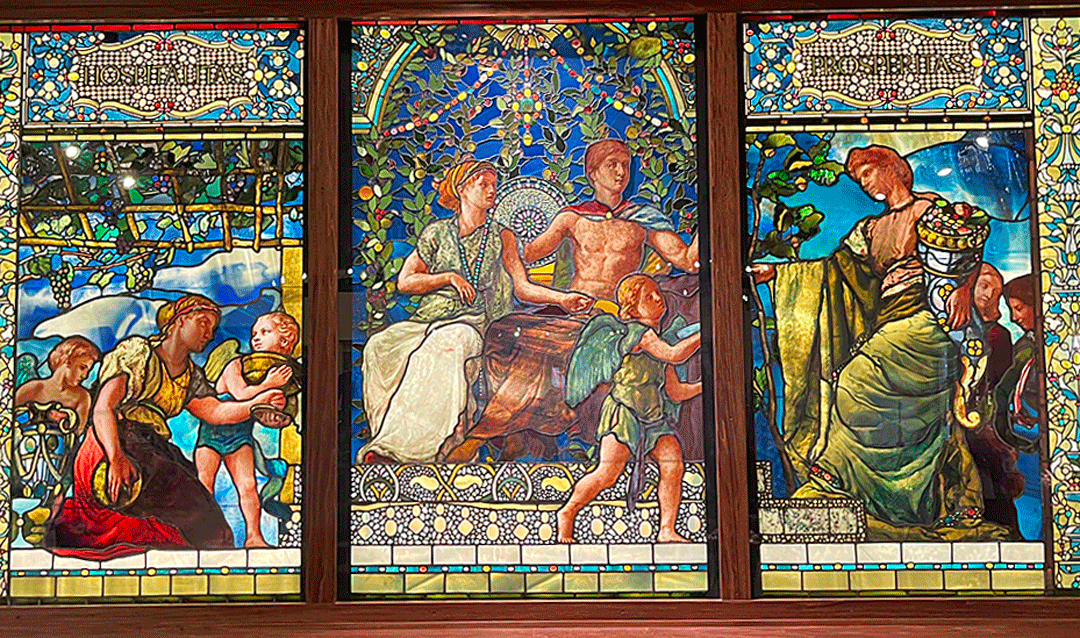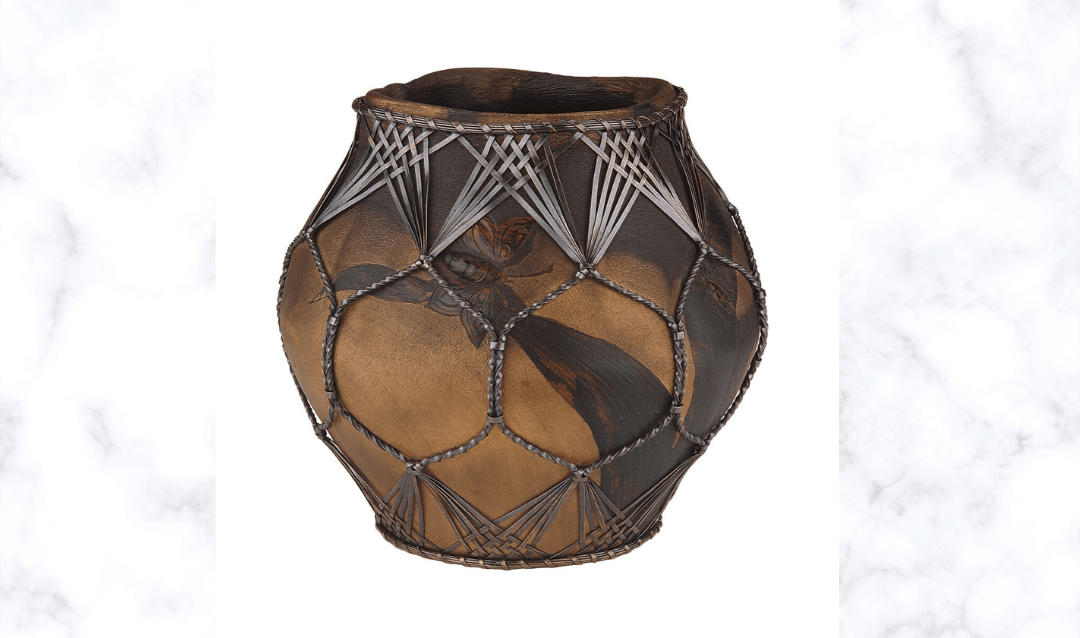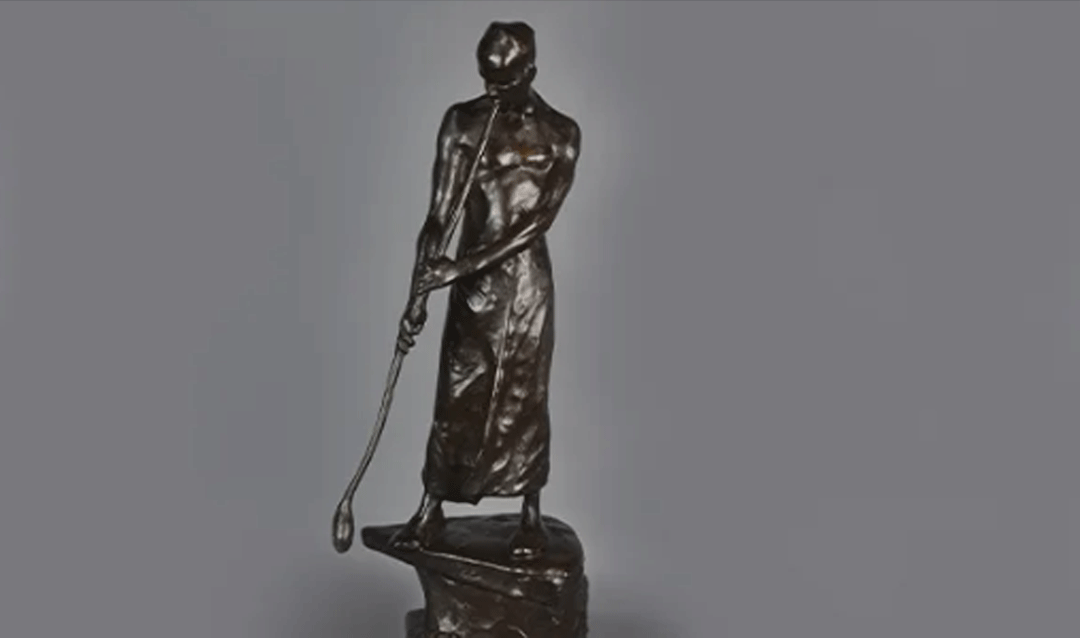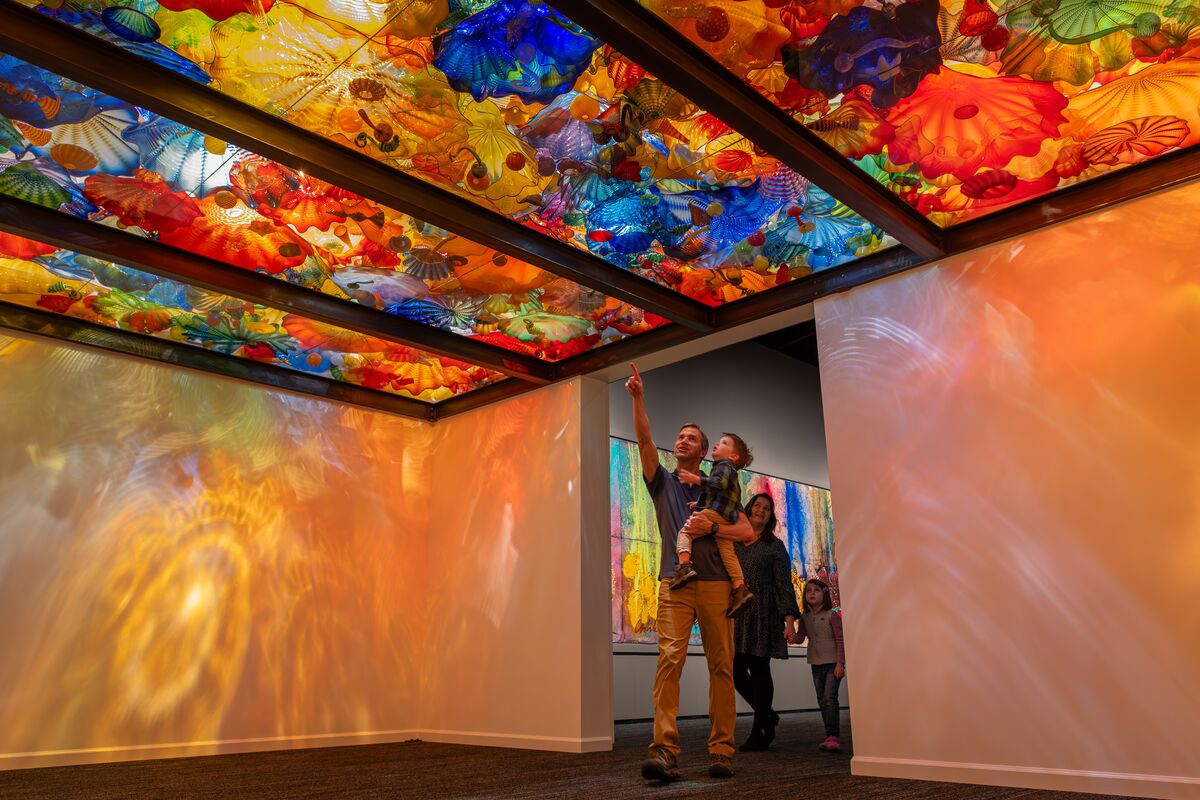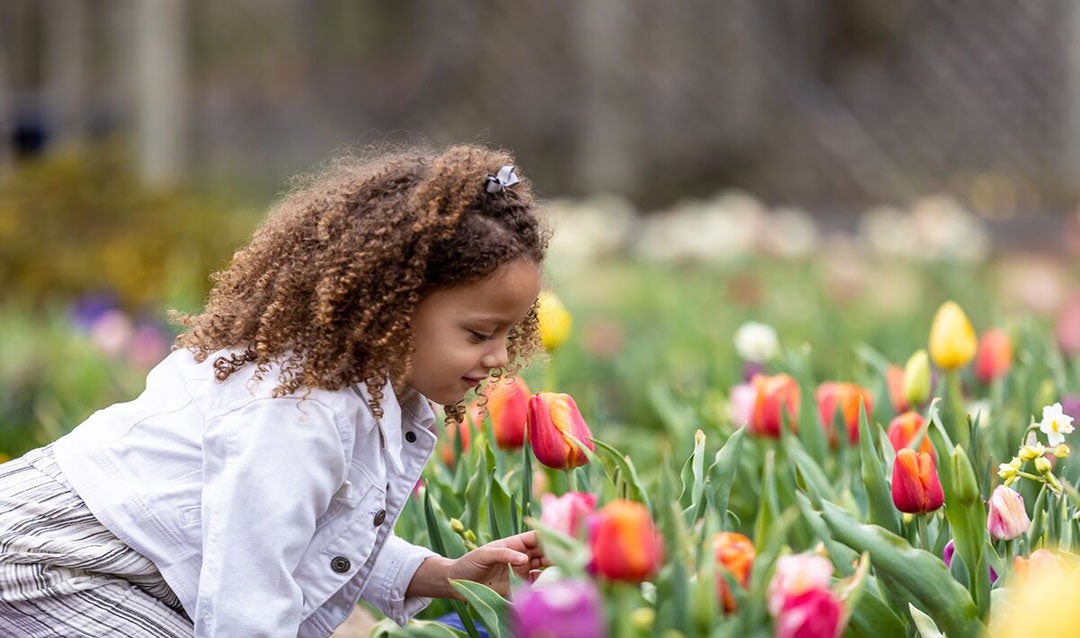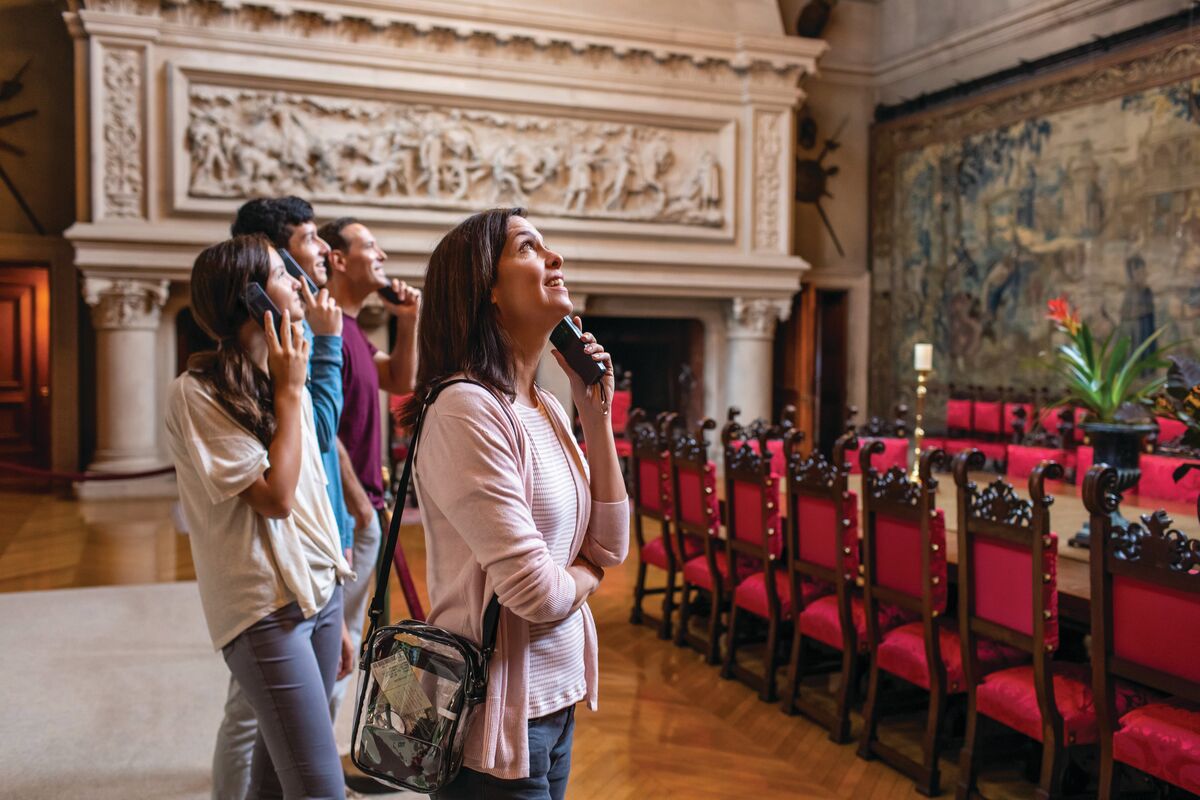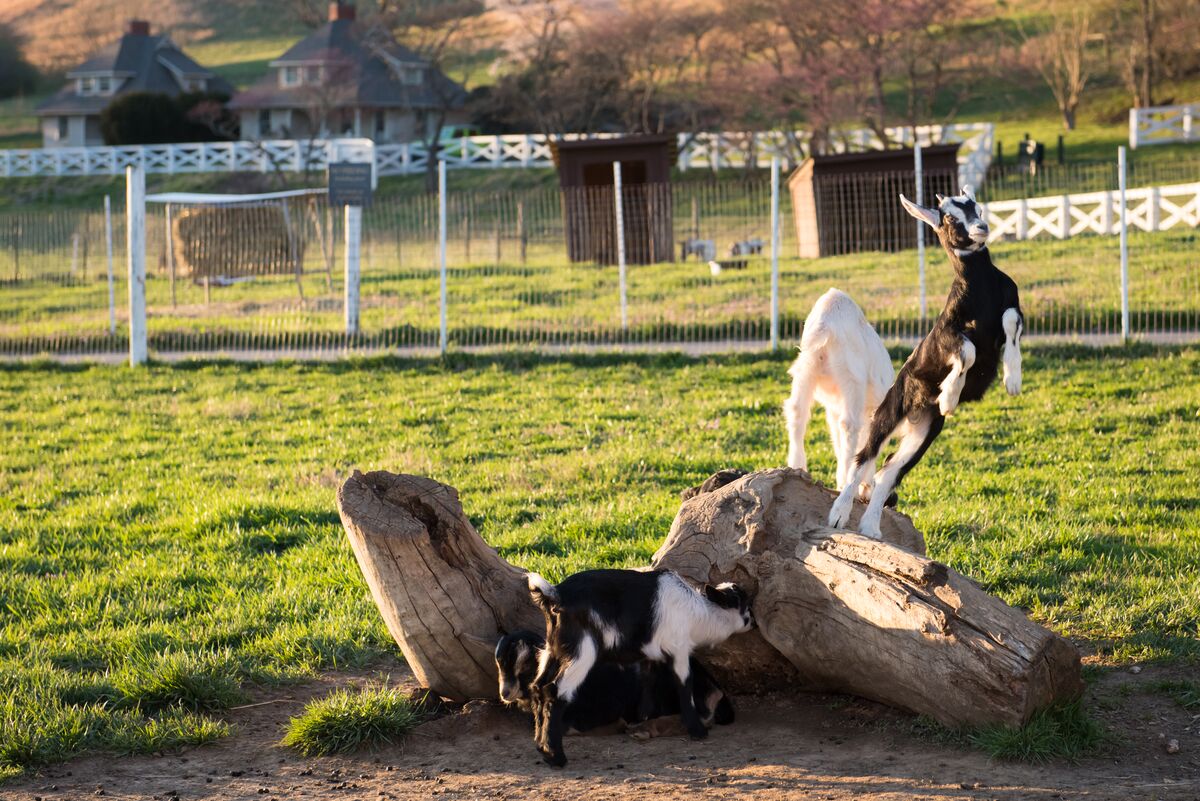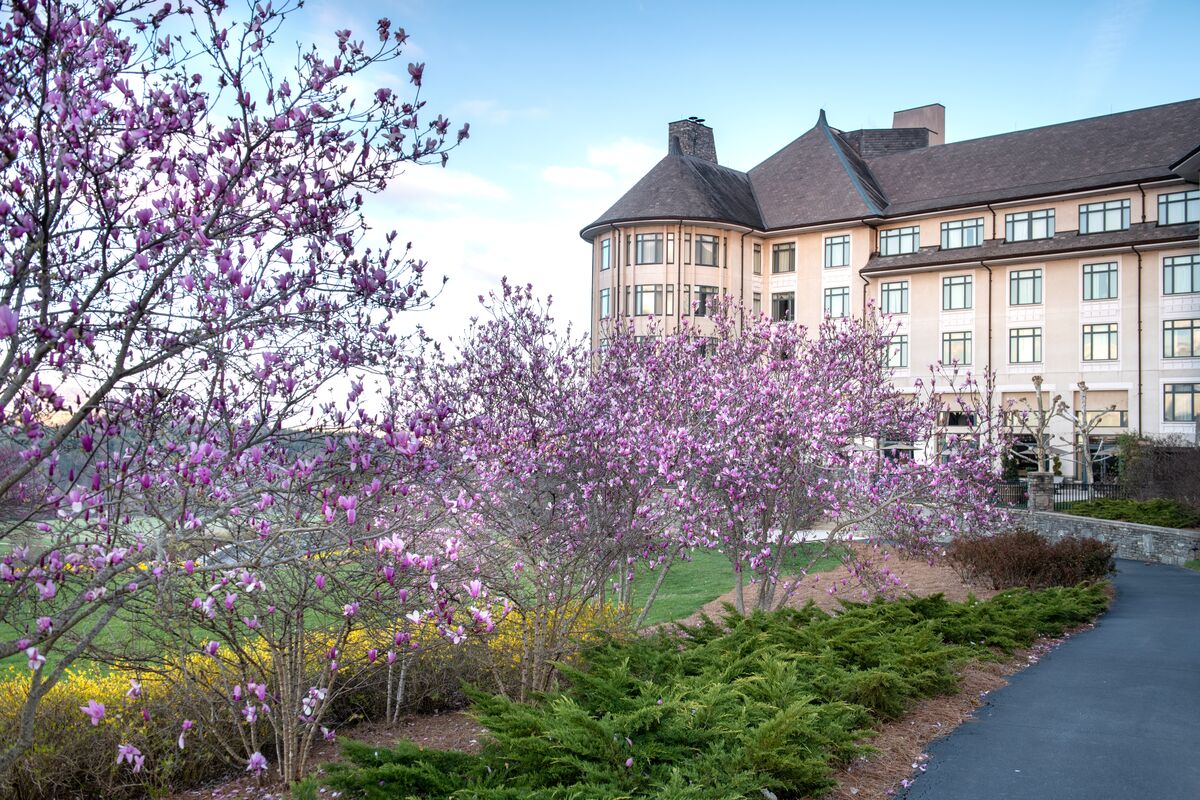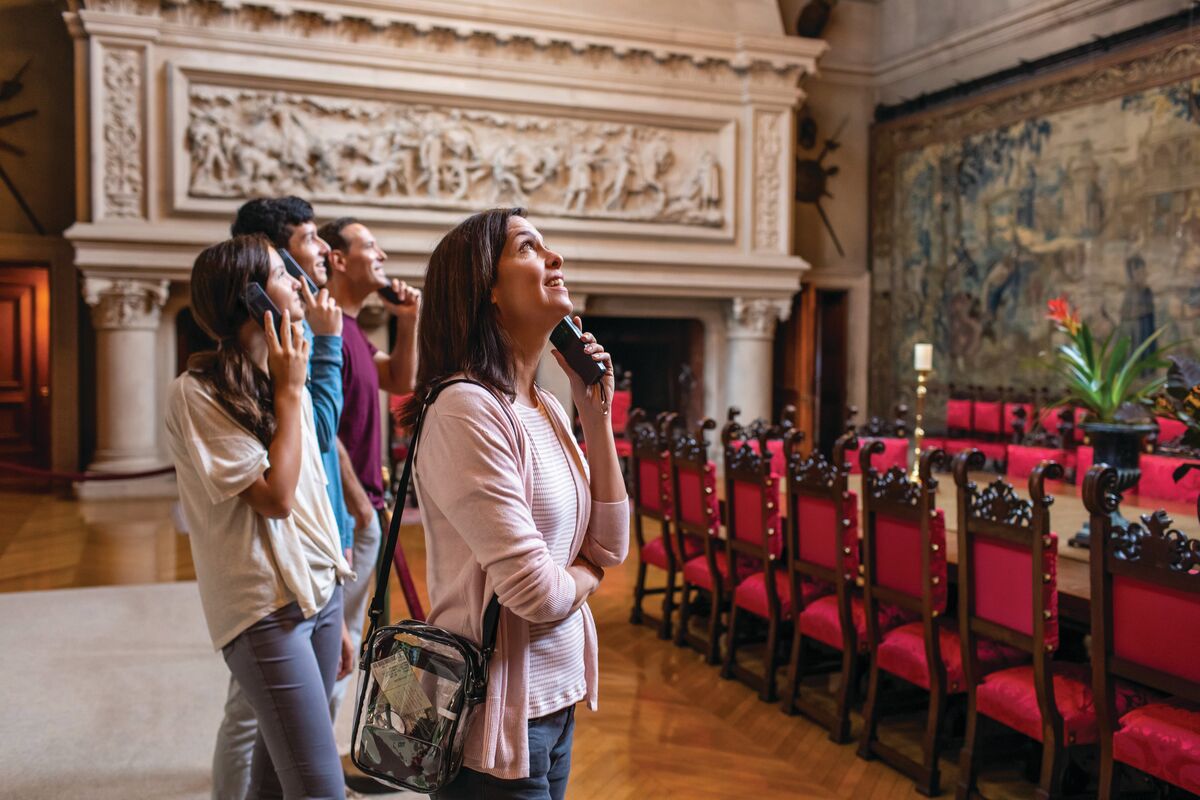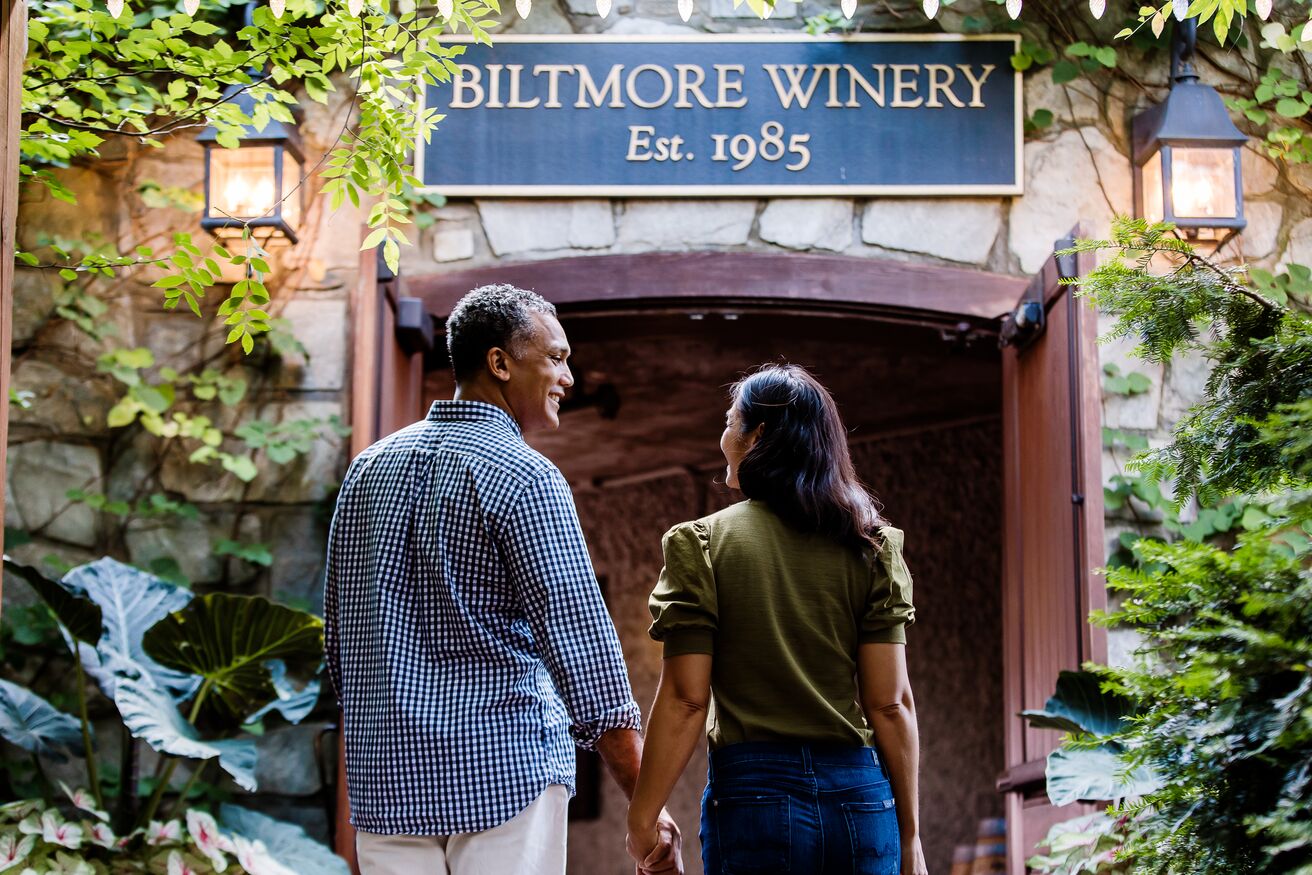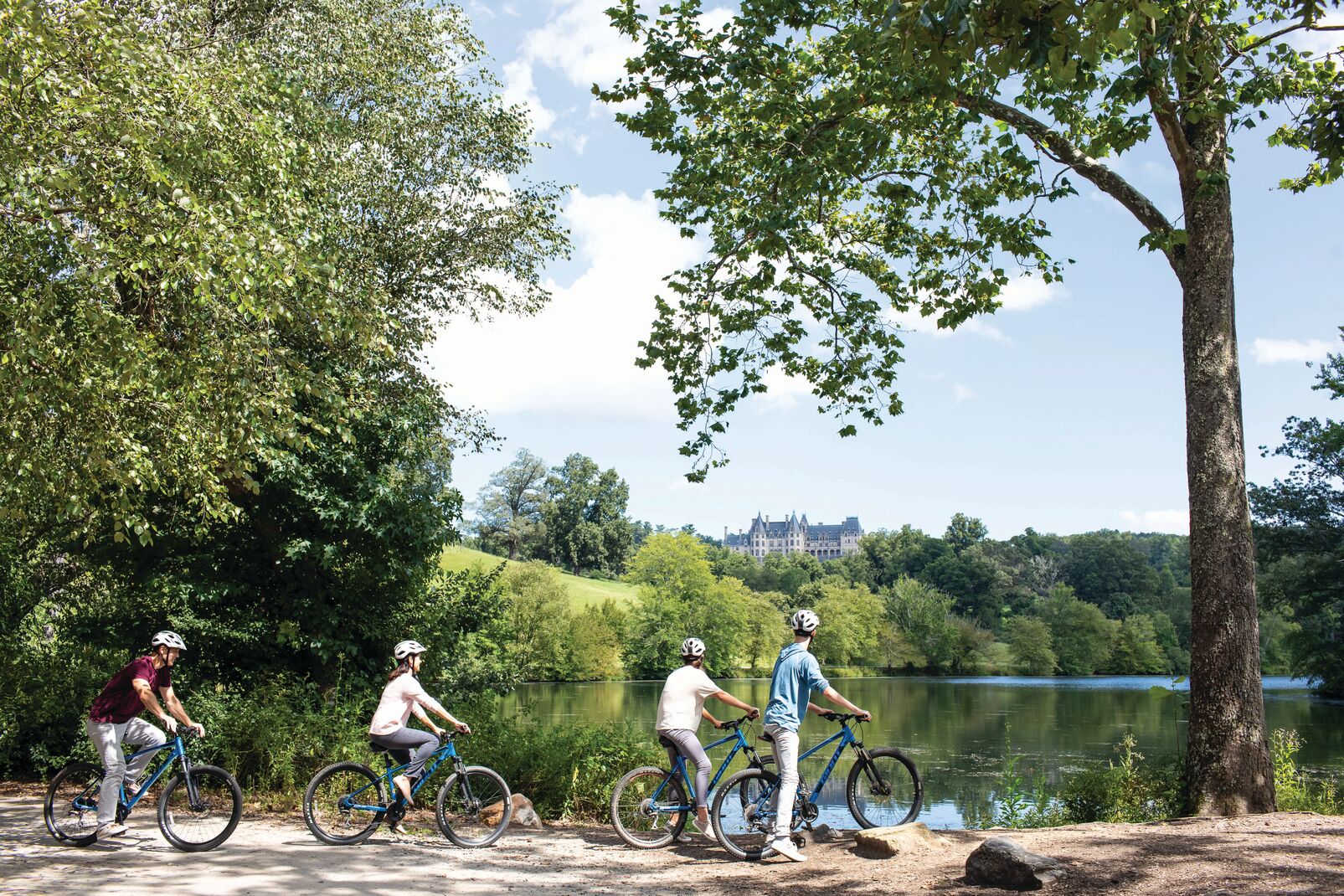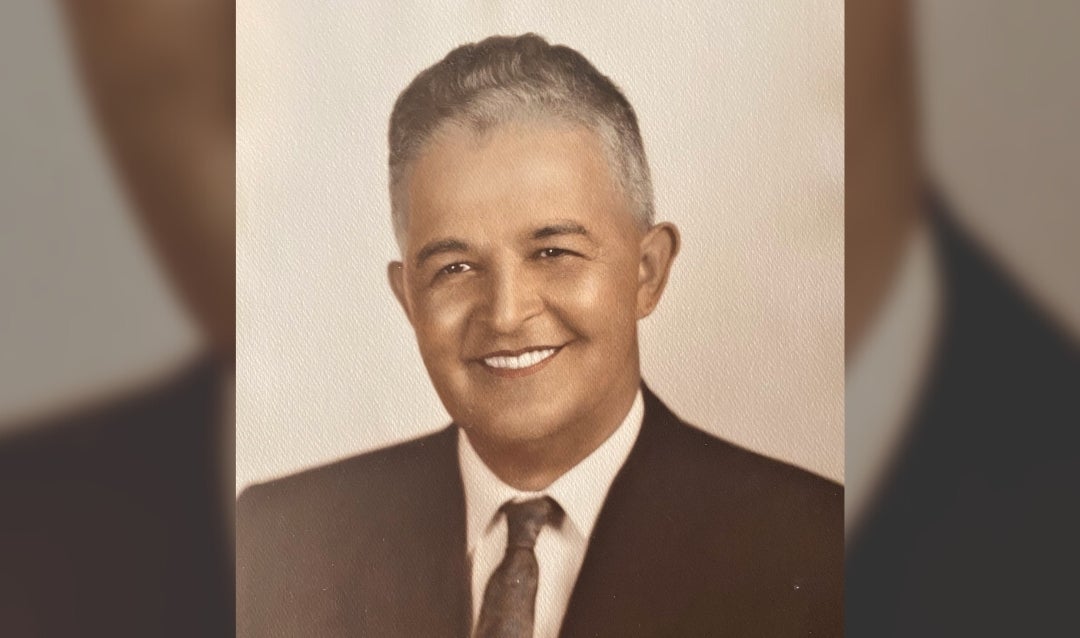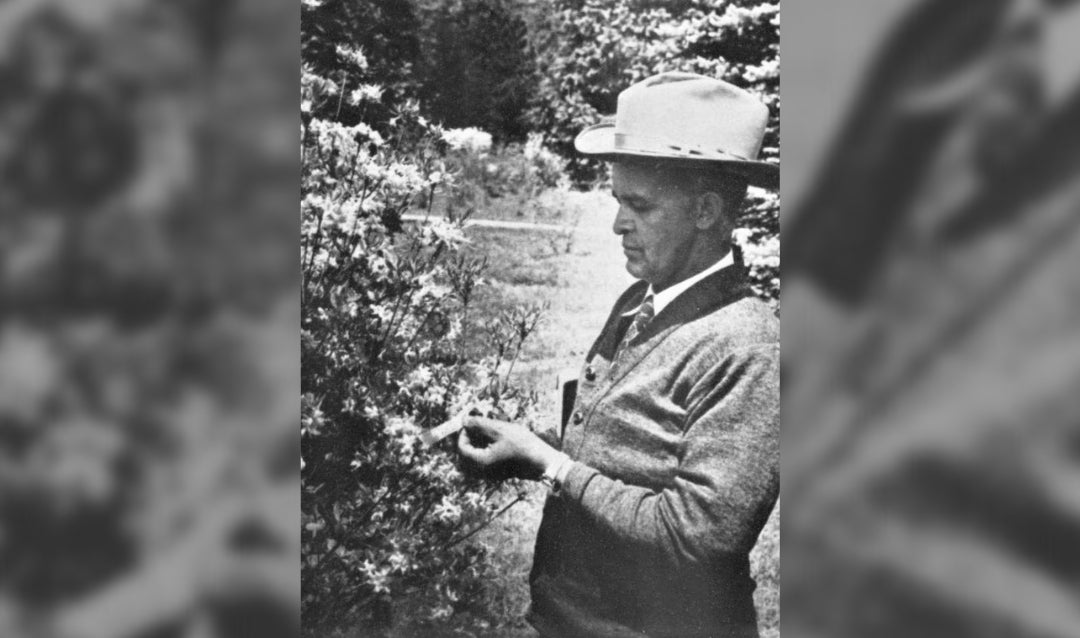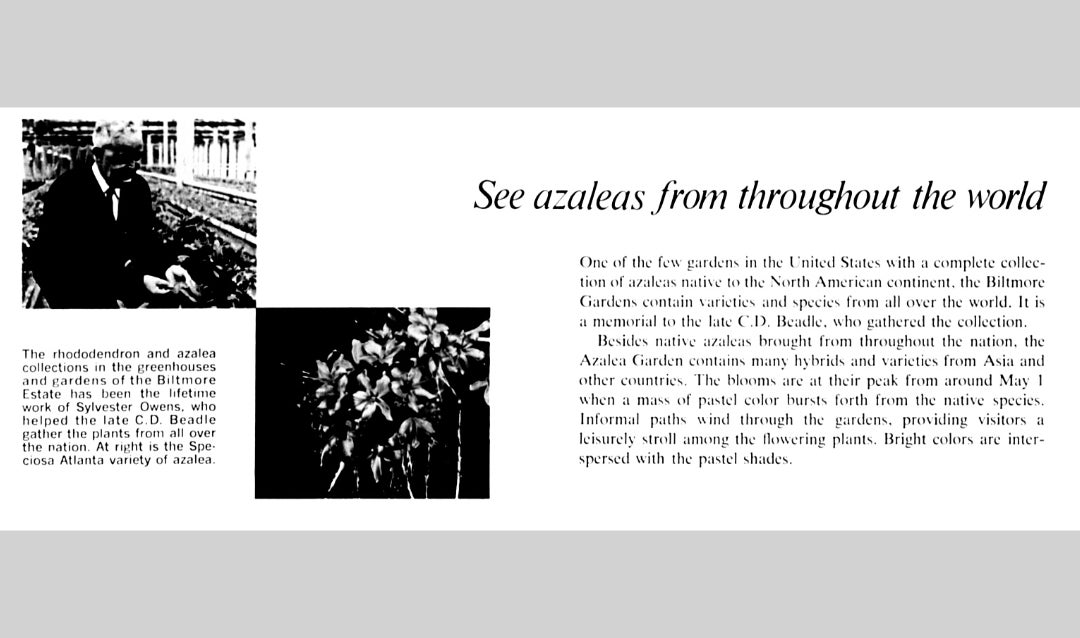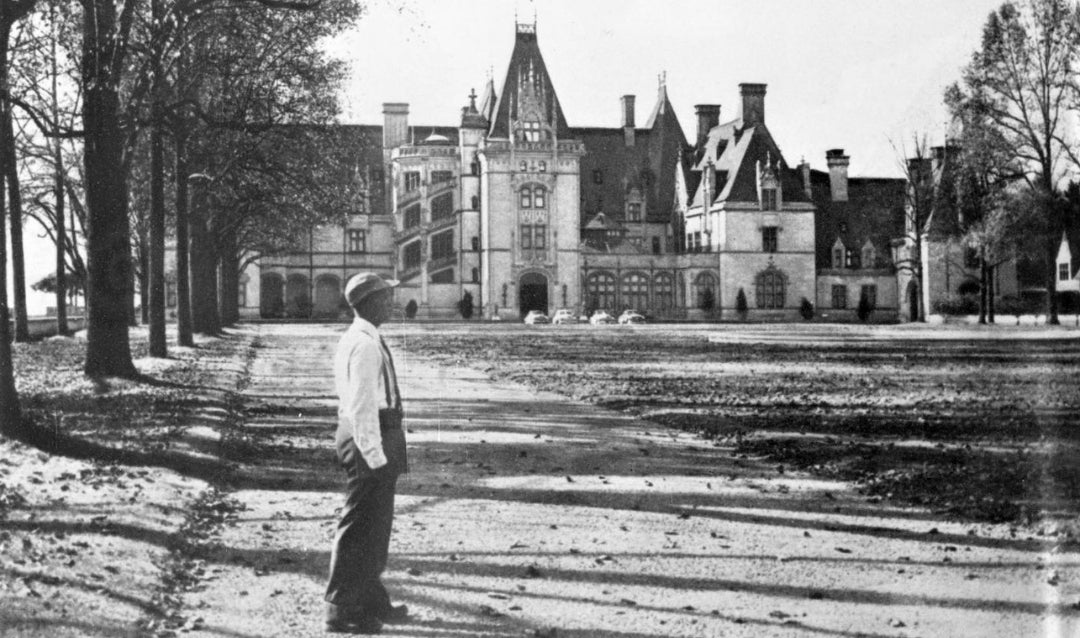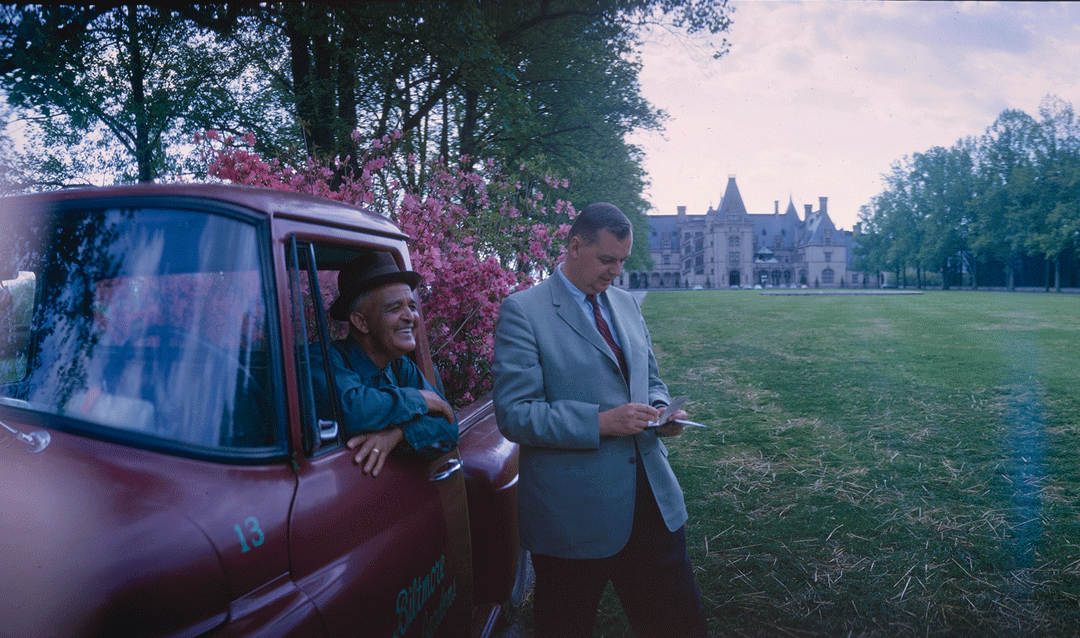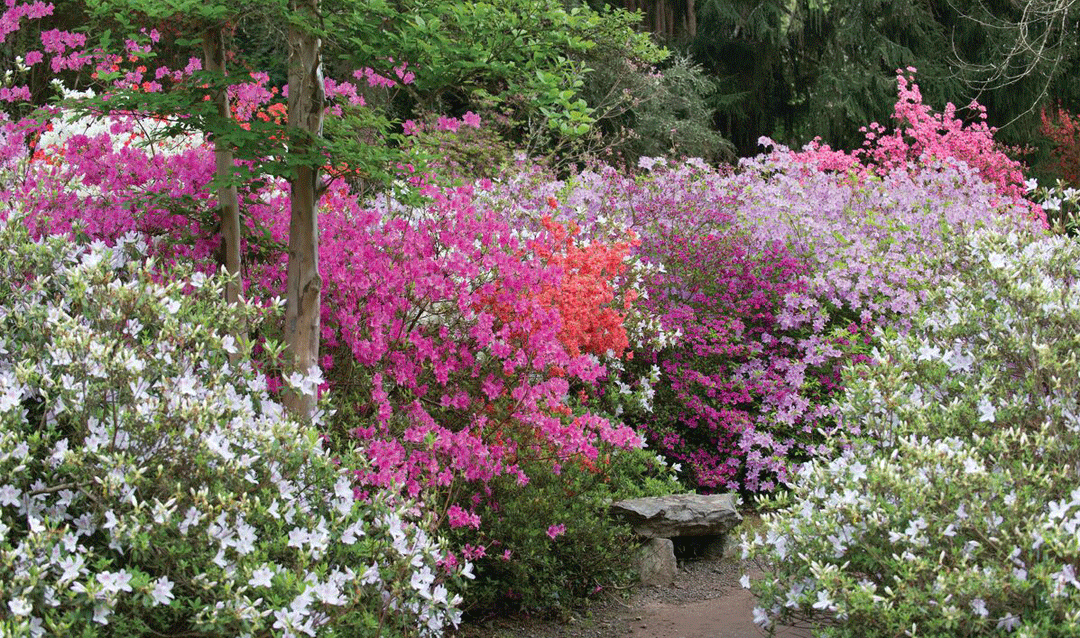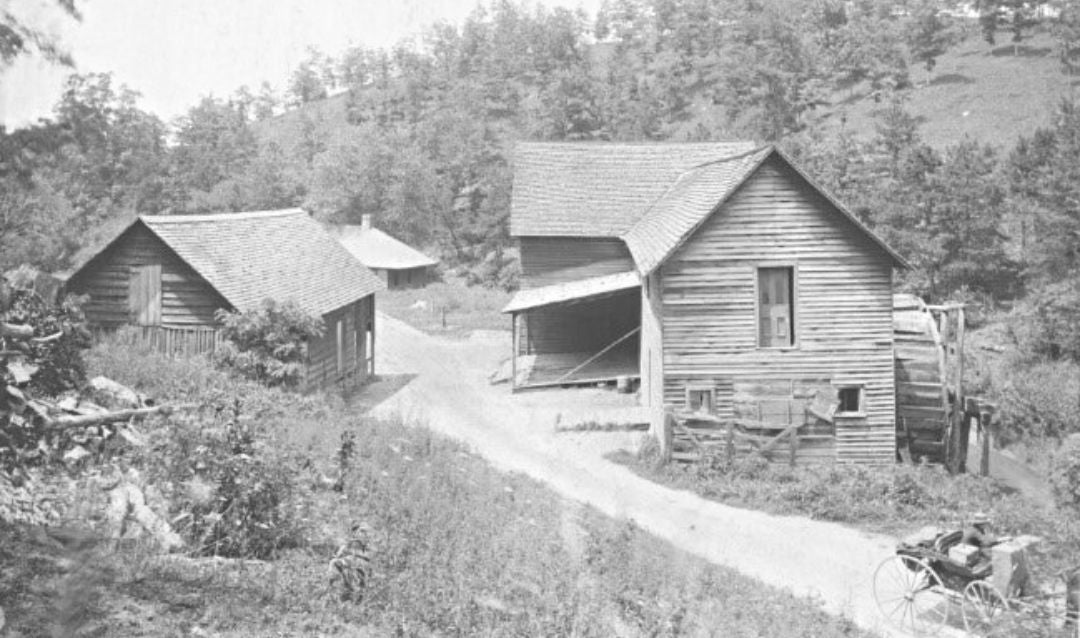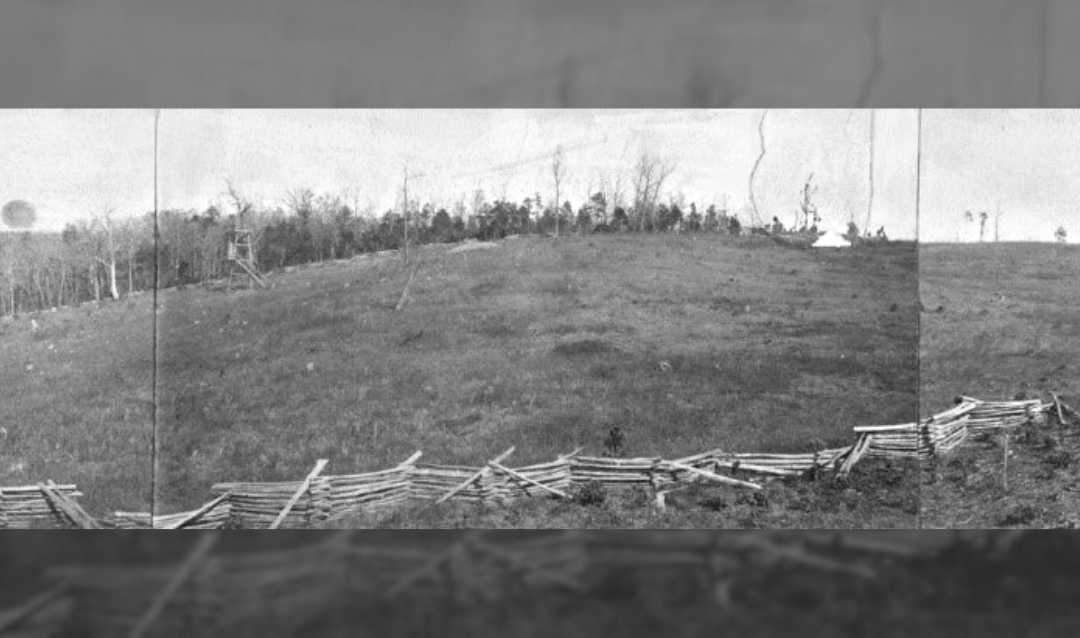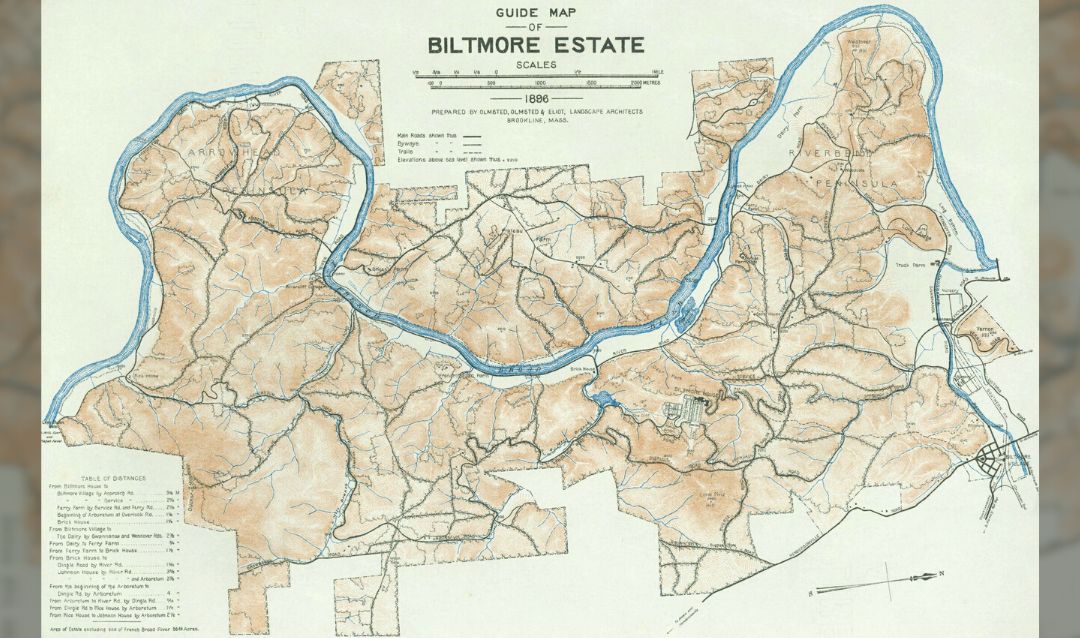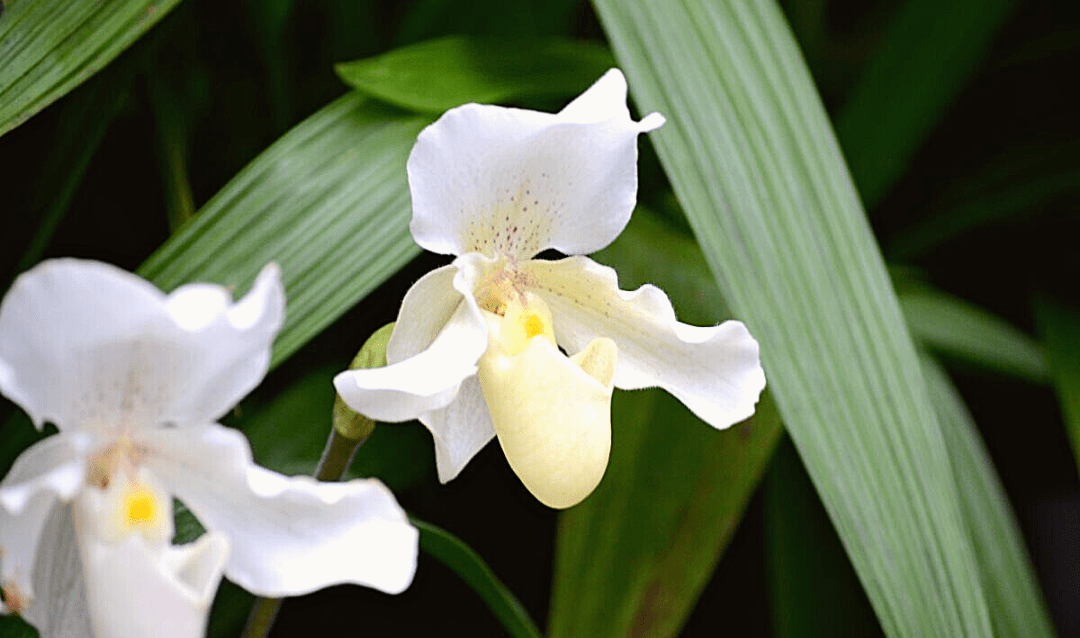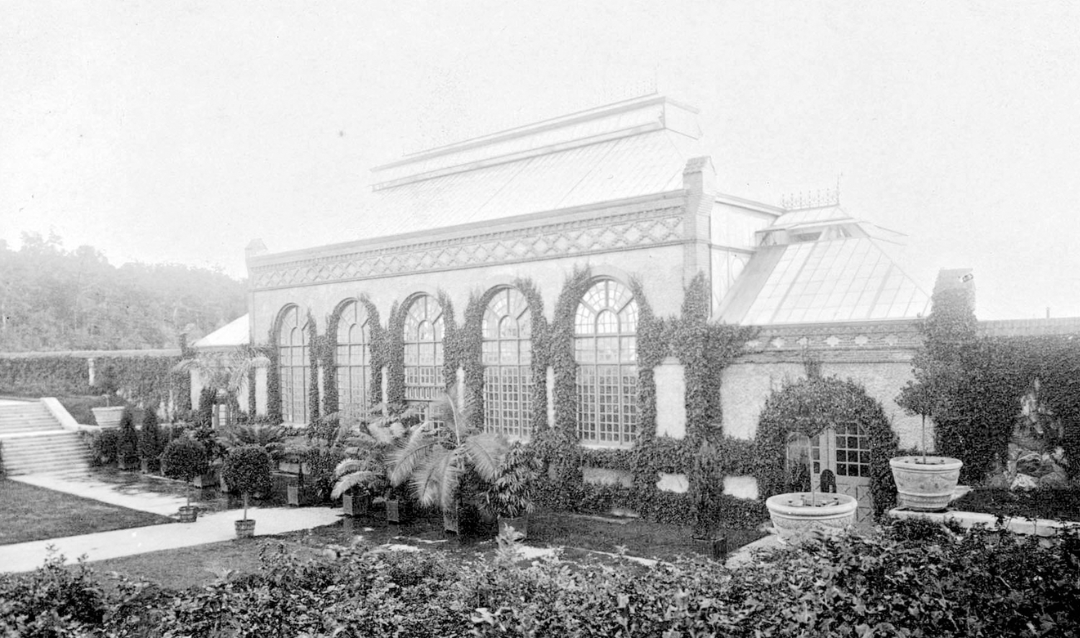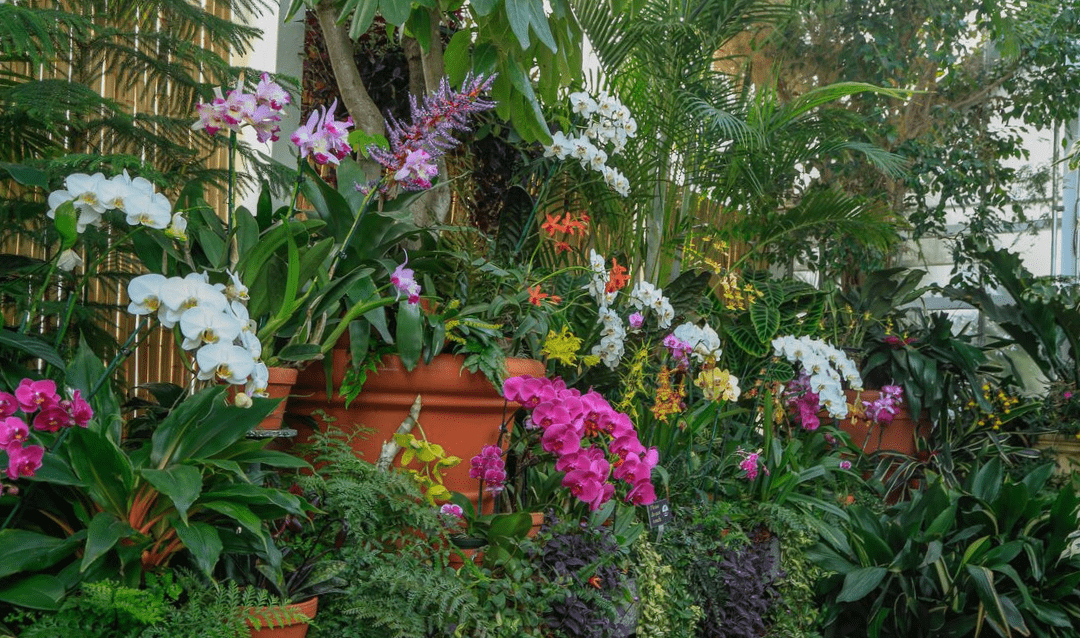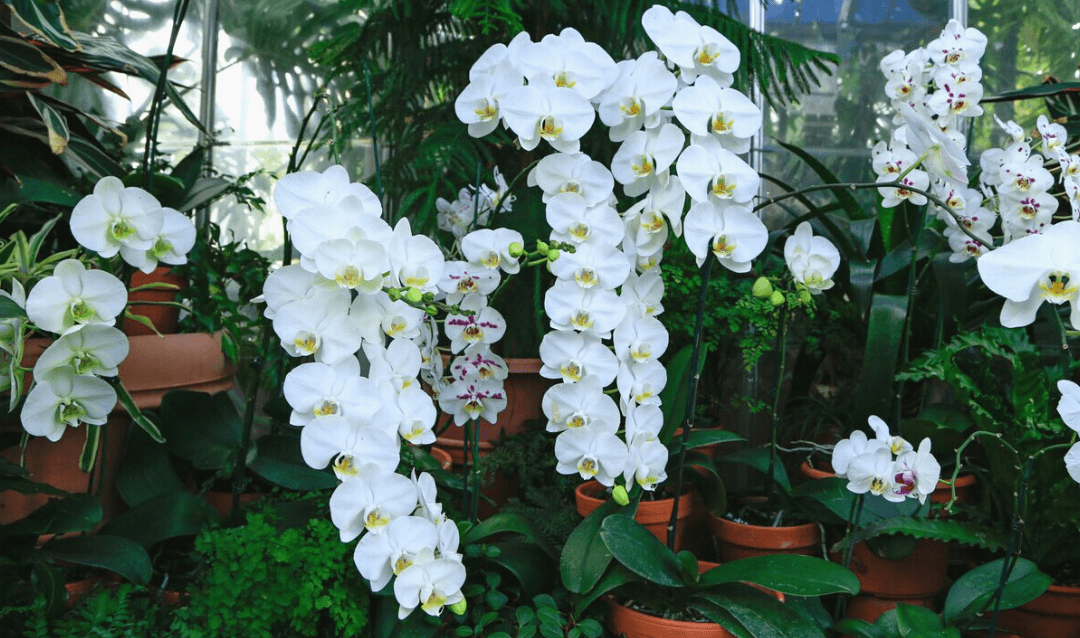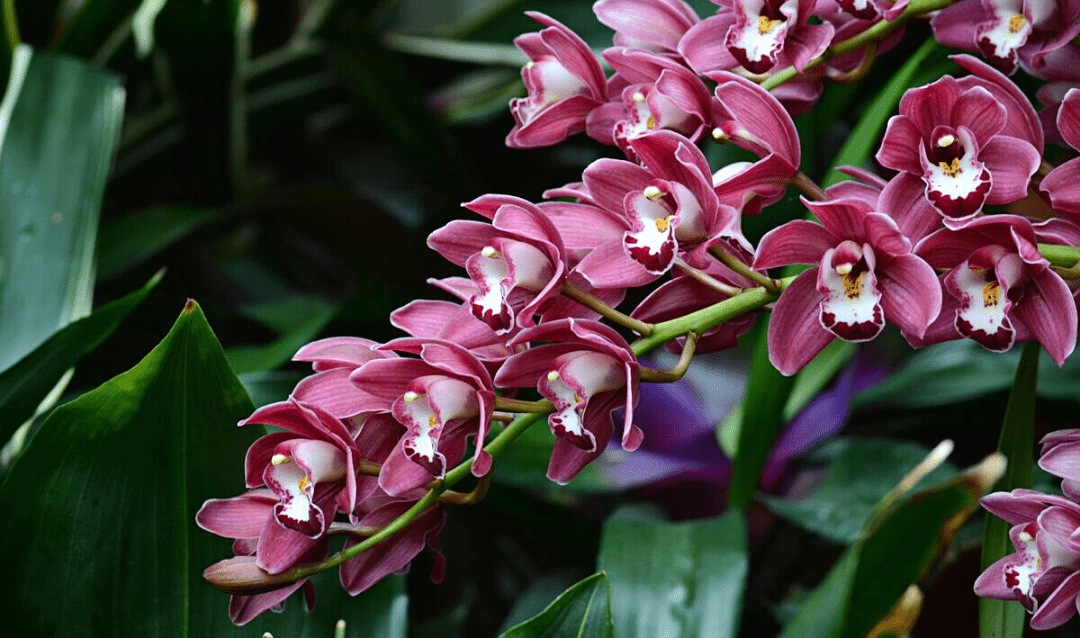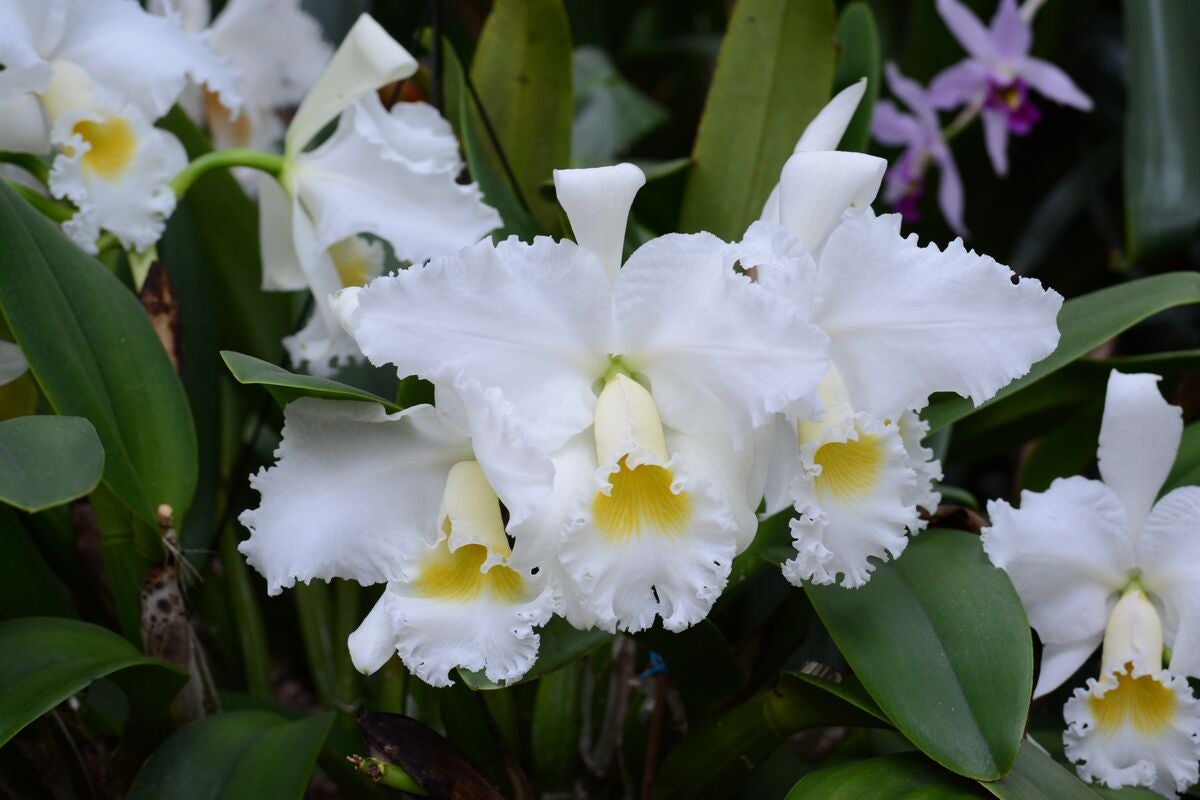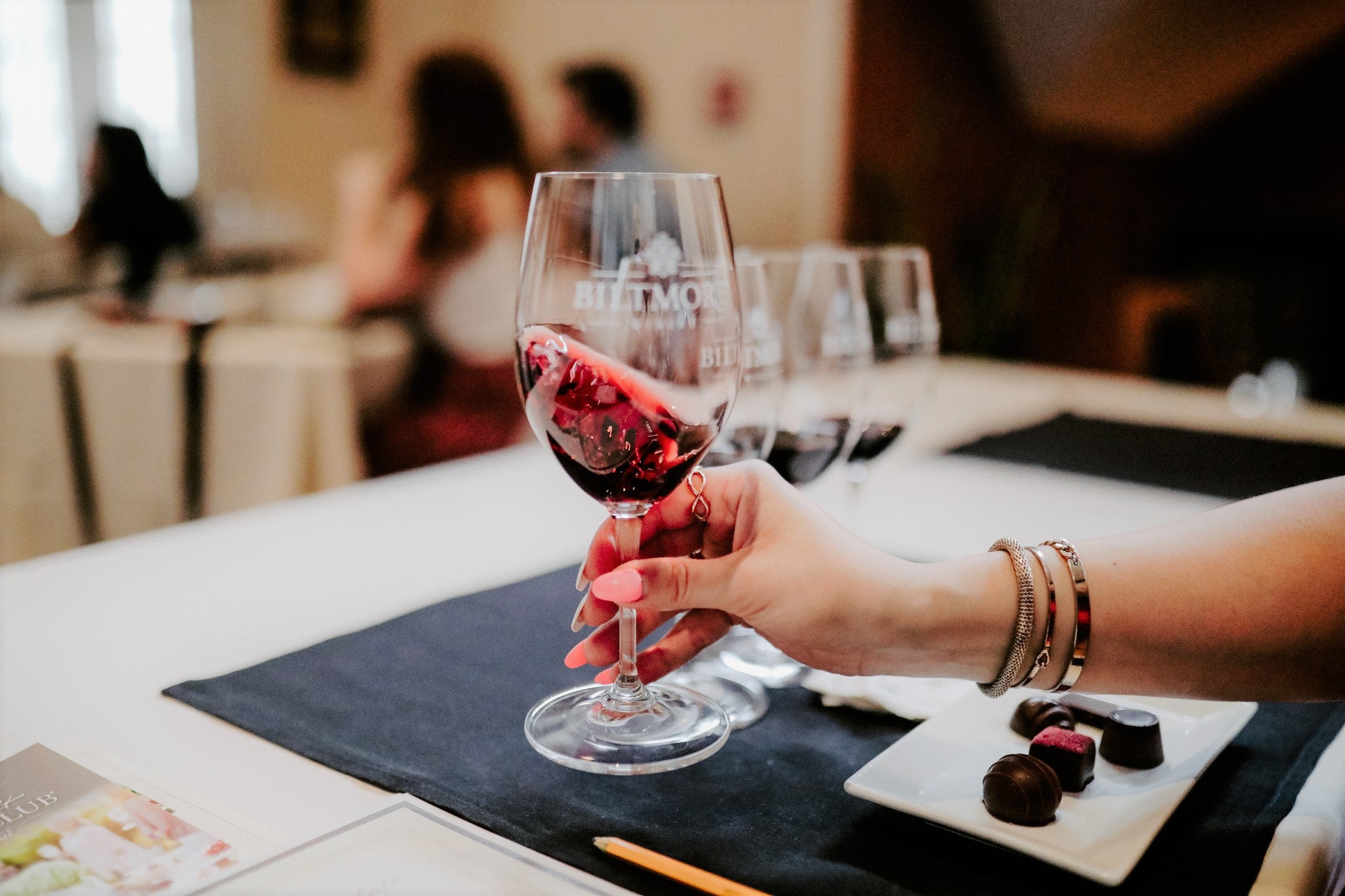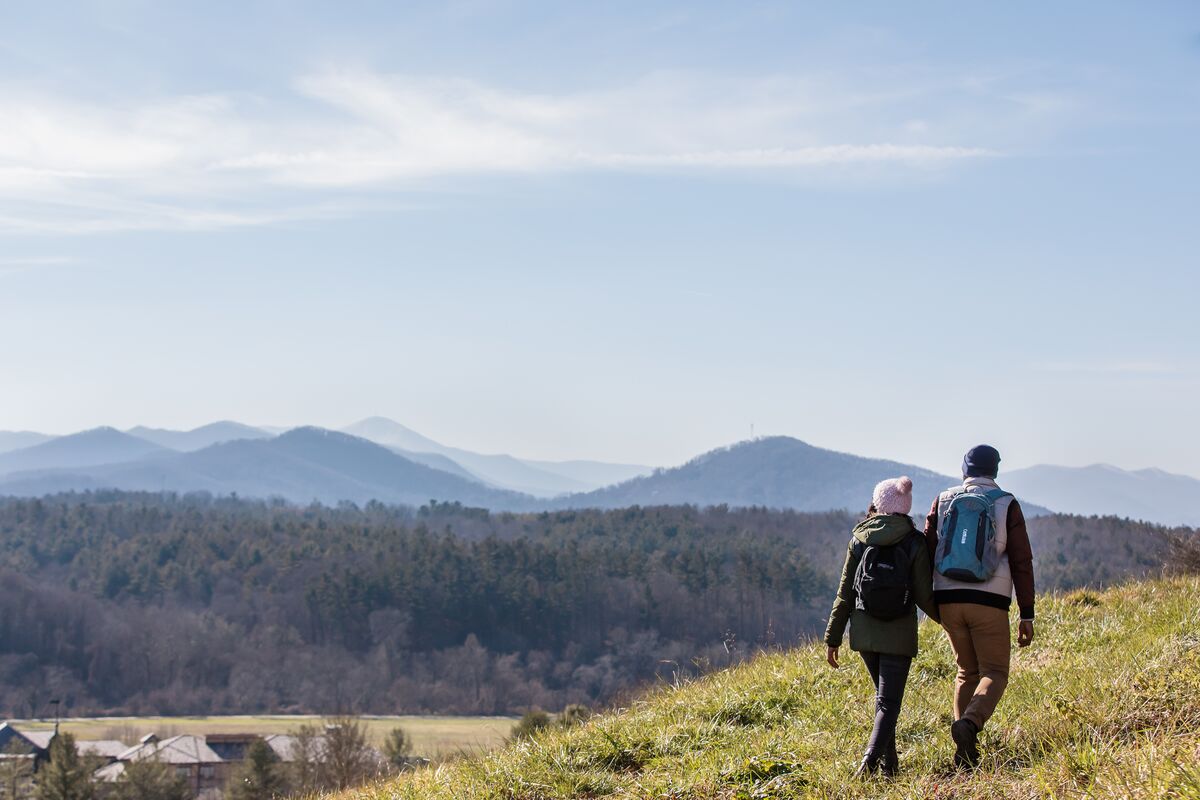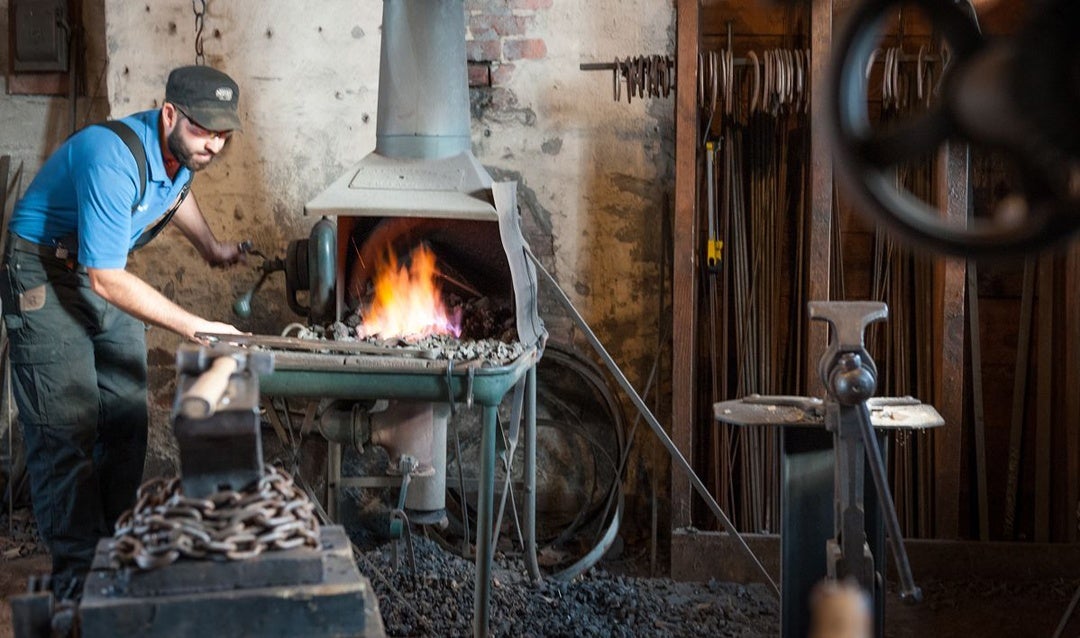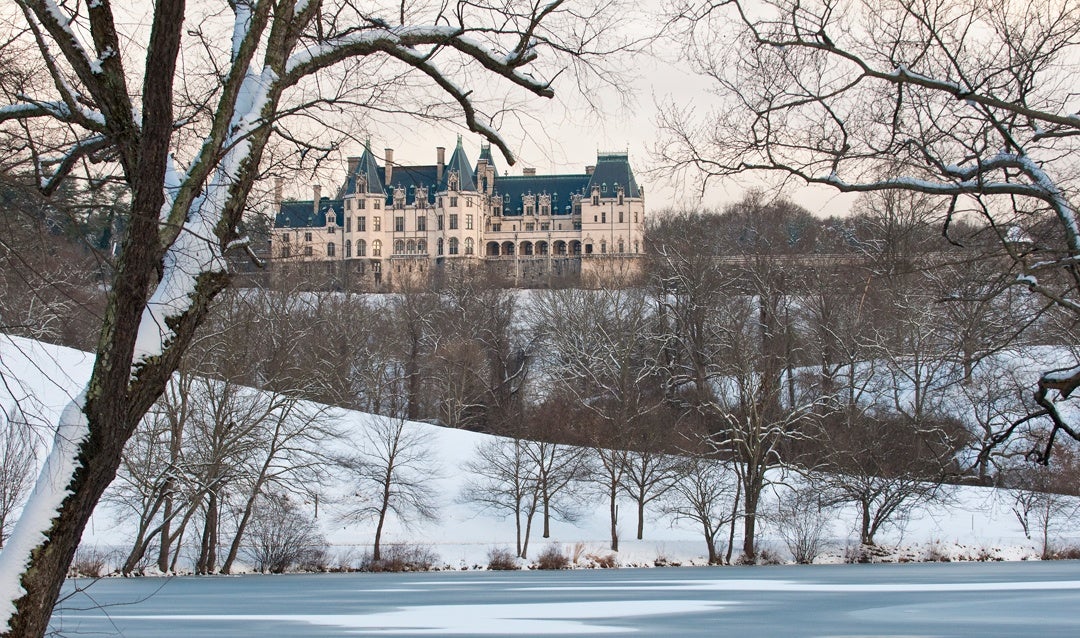“Glass is the most magical of all materials. It transmits light in a special way.” – Dale Chihuly
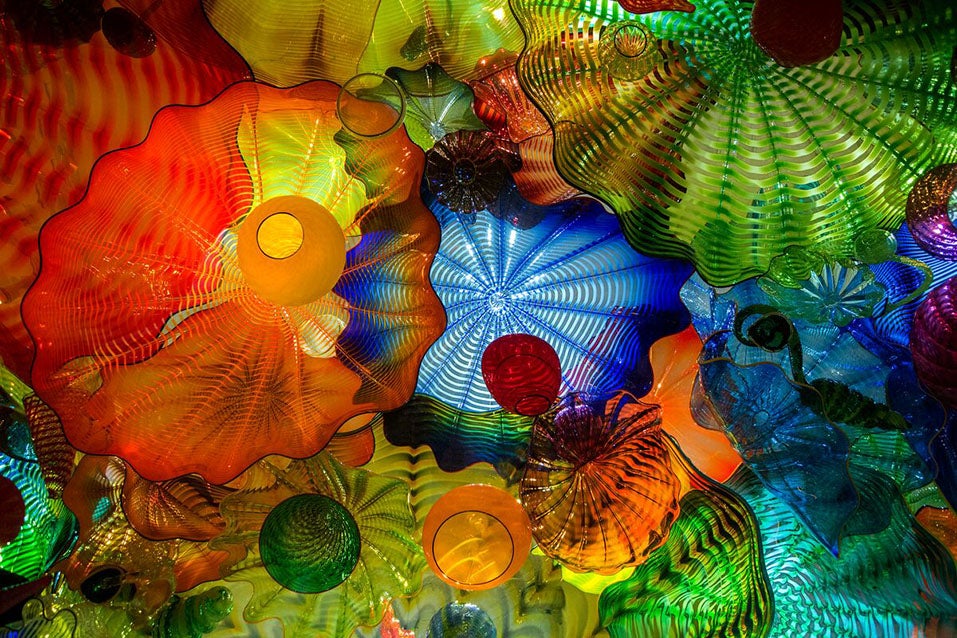
Dale Chihuly Persian Ceiling (detail), 2012 25 x 15′ Royal Ontario Museum, Toronto, installed 2016.
Dale Chihuly is an American artist known for revolutionizing the Studio Glass movement and elevating the medium of glass from the realm of craft to fine art.
With Chihuly at Biltmore now on display, we invite you to learn more about the artist and his impact around the world.
About the Artist
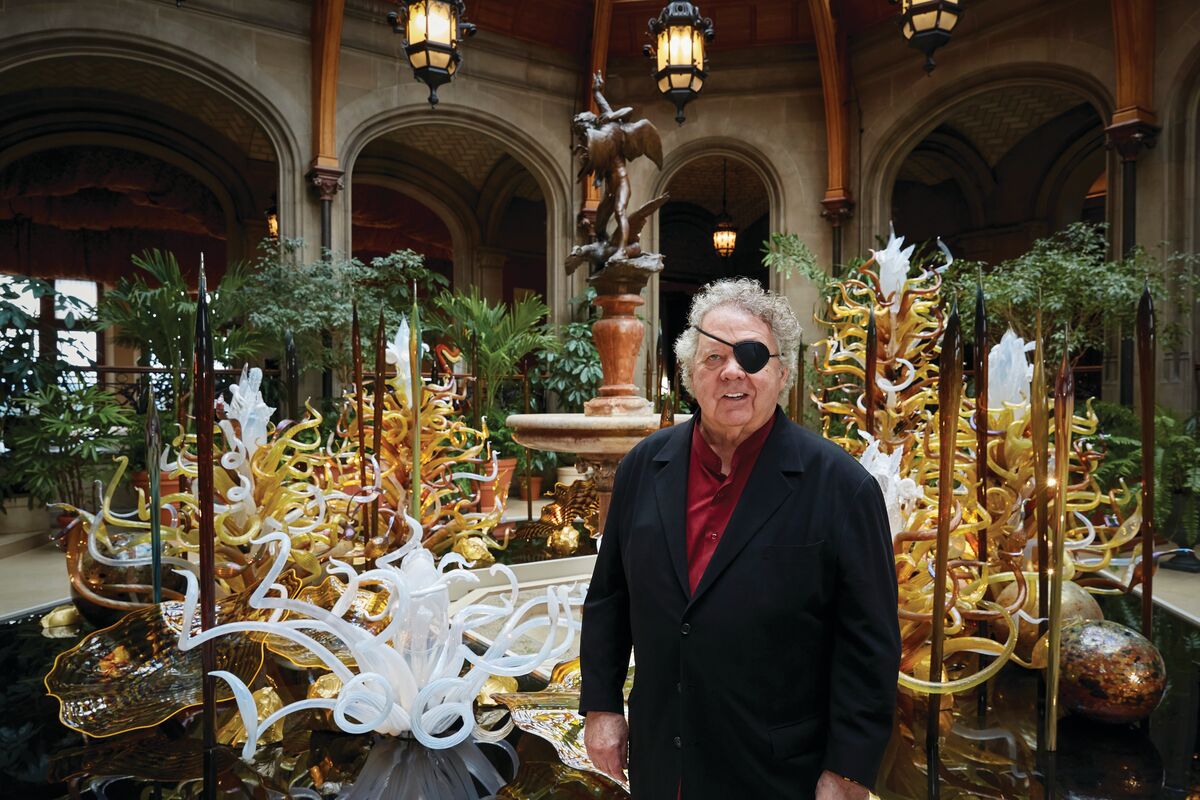
Dale Chihuly, 2017 © 2017 Chihuly Studio. All rights reserved.
Born in 1941 in Tacoma, Washington, Dale Chihuly discovered his passion for glass during his interior design studies at the University of Washington. After graduating in 1965, he joined the first glass art program in the United States at the University of Wisconsin.
He later continued his studies and established the glass program at the prestigious Rhode Island School of Design, where in 1968, he earned an MFA and a Fulbright Fellowship that enabled him to study and work at the prestigious Venini glass factory in Venice.
His pivotal experience there influenced the team glassblowing approach that he later emphasized an educator and employed in his own practice. Upon returning to the US in 1968, he became head of RISD’s glass program and co-founded the Pilchuck Glass School in Washington, contributing significantly to the development of glass as fine art.
While mentoring other young artists, Chihuly relentlessly pursued his own creative vision, developing a body of work that is featured today in over 200 museums worldwide, and earning numerous awards, including two National Endowment for the Arts fellowships and thirteen honorary doctorates.
Exhibitions Around the World
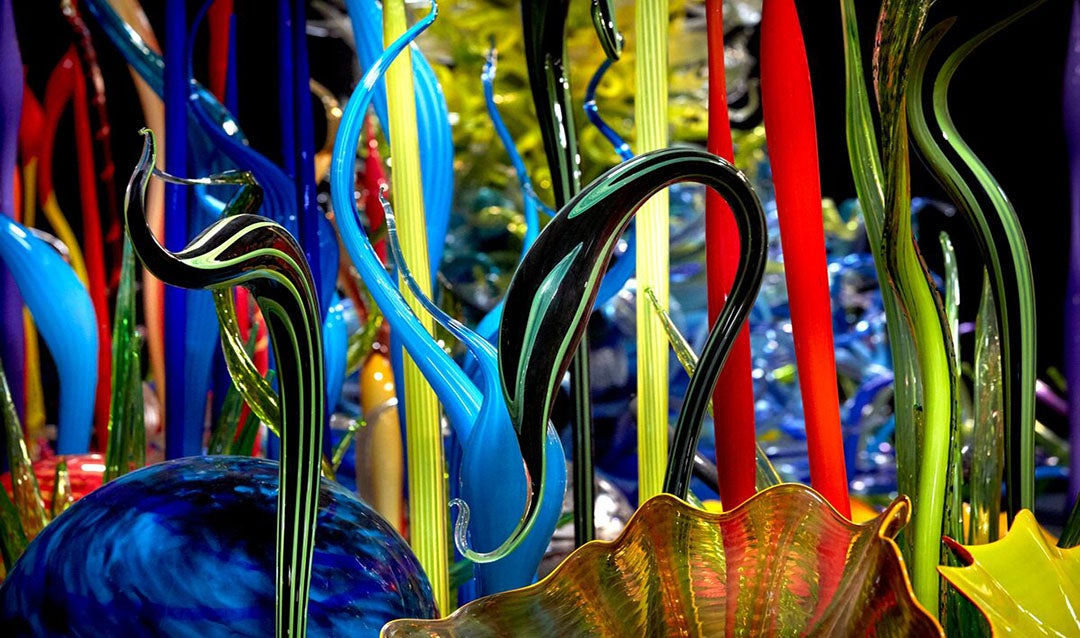
Dale Chihuly, Mille Fiori (detail), 2018 © 2018 Chihuly Studio. All rights reserved.
Chihuly has created more than a dozen well-known series of works, among them, Cylinders and Baskets in the 1970s; Seaforms, Macchia, Persians, and Venetians in the 1980s; Niijima Floats and Chandeliers in the 1990s; and Fiori in the 2000s. He is also celebrated for large architectural installations.
In 1986, he was honored with a solo exhibition, Dale Chihuly objets de verre, at the Musée des Arts Décoratifs, Palais du Louvre, in Paris. In 1995, he began Chihuly Over Venice, for which he created sculptures at glass-making facilities in Finland, Ireland, and Mexico, and then installed them over the canals and piazzas of Venice.
In 1999, Chihuly mounted perhaps his most ambitious exhibition to that date, Chihuly in the Light of Jerusalem; where more than 1 million visitors attended the Tower of David Museum to view his installations. In 2001, the Victoria and Albert Museum in London presented the exhibition Chihuly at the V&A.
Exhibitions in Botanical Settings
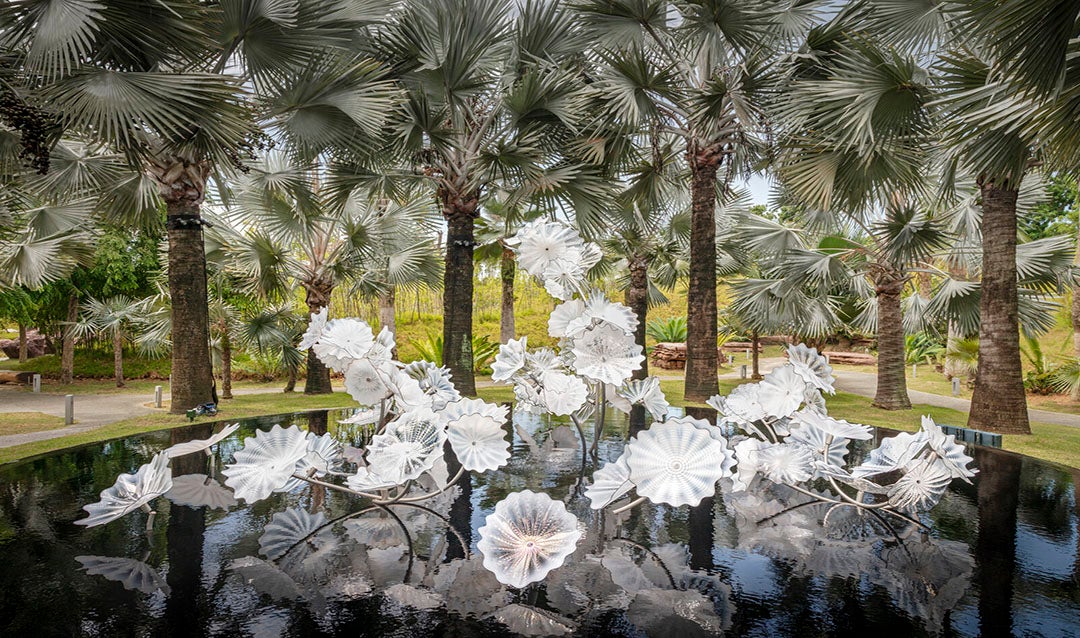
Dale Chihuly, Ethereal White Persian Pond, 2018, Gardens by the Bay, Singapore, installed 2021 © 2018 Chihuly Studio. All rights reserved.
Chihuly’s lifelong fascination for glasshouses has grown into a series of exhibitions within botanical settings. The Garden Cycle began in 2001 at the Garfield Park Conservatory in Chicago, and continued at several locations, among them London’s Royal Botanic Gardens, at Kew in 2005 and 2019; the New York Botanical Garden in 2006 and 2017; and Singapore’s Gardens by the Bay in 2021.
Meanwhile, Chihuly continued to present ambitious exhibitions at museums, including the de Young Museum in San Francisco, in 2008; the Museum of Fine Arts, Boston, in 2011; the Virginia Museum of Fine Arts, Richmond, in 2012; the Montreal Museum of Fine Arts, in 2013; the Royal Ontario Museum, Toronto, in 2016; the Crystal Bridges Museum of American Art, Bentonville, Arkansas, in 2017; and the Groninger Museum in the Netherlands in 2018. In 2012, Chihuly Garden and Glass, the artist’s long-term exhibition, opened at Seattle Center.
In 2018, Biltmore welcomed Chihuly at Biltmore, an exhibition showcasing the artist’s breathtaking large-scale glass sculptures in the century-old gardens of America’s Largest Home®. This unique visual experience marked the first art exhibition in Biltmore’s historic gardens and the first garden exhibition of artist Dale Chihuly’s works in North Carolina.
Experience an All-New Chihuly at Biltmore
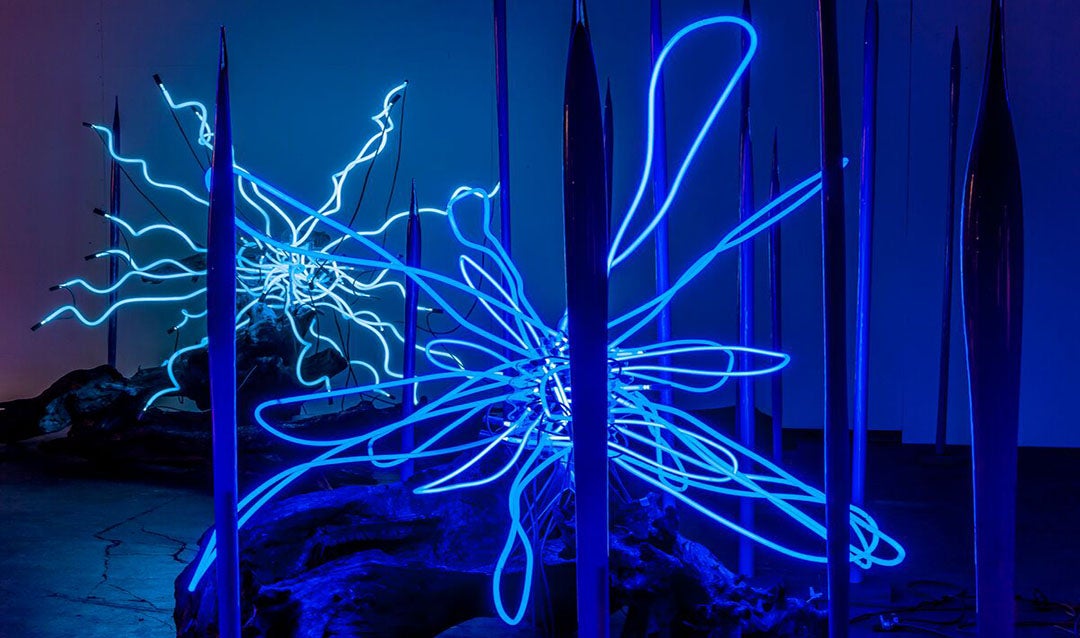
Dale Chihuly, Sapphire Neon with Burned Logs and Neodymium Reeds (detail), 2015, 8 x 21 x 15′ © 2015 Chihuly Studio. All rights reserved.
The success of the 2018 exhibition paved the way for an all-new Chihuly at Biltmore exhibition, presented in Amherst at Deerpark®.
“Amherst offers an ideal setting for you to not only view the installations, but learn about Dale Chihuly’s life, work, and his powerful influence on art, as well as Biltmore’s own connection to glass art,” said Travis Tatham, Biltmore’s Director of Entertainment and Event Programming.
In addition to the awe-inspiring gallery exhibition featuring specially curated pedestal works, Drawings, Chandeliers, Towers, Mille Fiori, and Neon, guests have the opportunity to marvel at two large-scale installations presented on estate grounds: one on the East Terrace in front of Biltmore House and one at the Entry Green in Antler Hill Village.
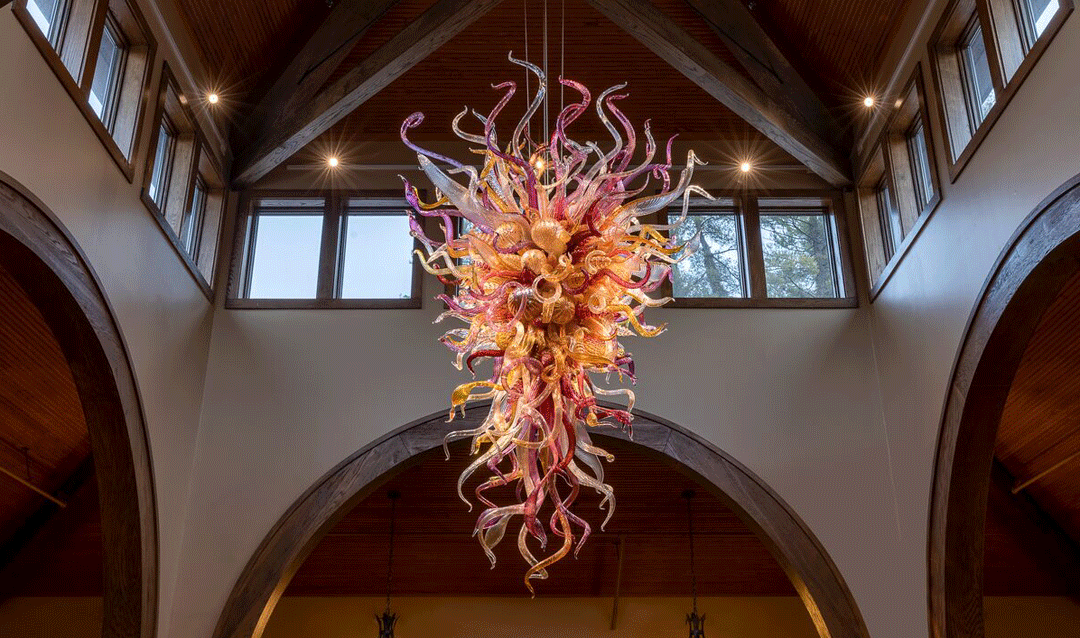
Chandelier in Winery. Dale Chihuly, Iris Gold and Garnet Chandelier, 2022, 9-1/2 x 6 x 6′, Biltmore Winery, Asheville, North Carolina, installed 2023 © 2022 Chihuly Studio. All rights reserved.
While in the Village, be sure to admire Chihuly Iris Gold and Garnet Chandelier at the Winery. Installed in 2023, it was commissioned especially for Biltmore and is part of the estate’s permanent glorious glass collection.
From the grand interiors of America’s Largest Home® and surrounding artistic landscapes to the awe-inspiring displays in the galleries of Amherst, we can’t wait to welcome you to Chihuly at Biltmore.
Reserve your admission tickets and special admission-inclusive overnight packages for this must-see exhibition.
Featured image
Dale Chihuly with Laguna Torcello II
Biltmore, Asheville, North Carolina, 2018
